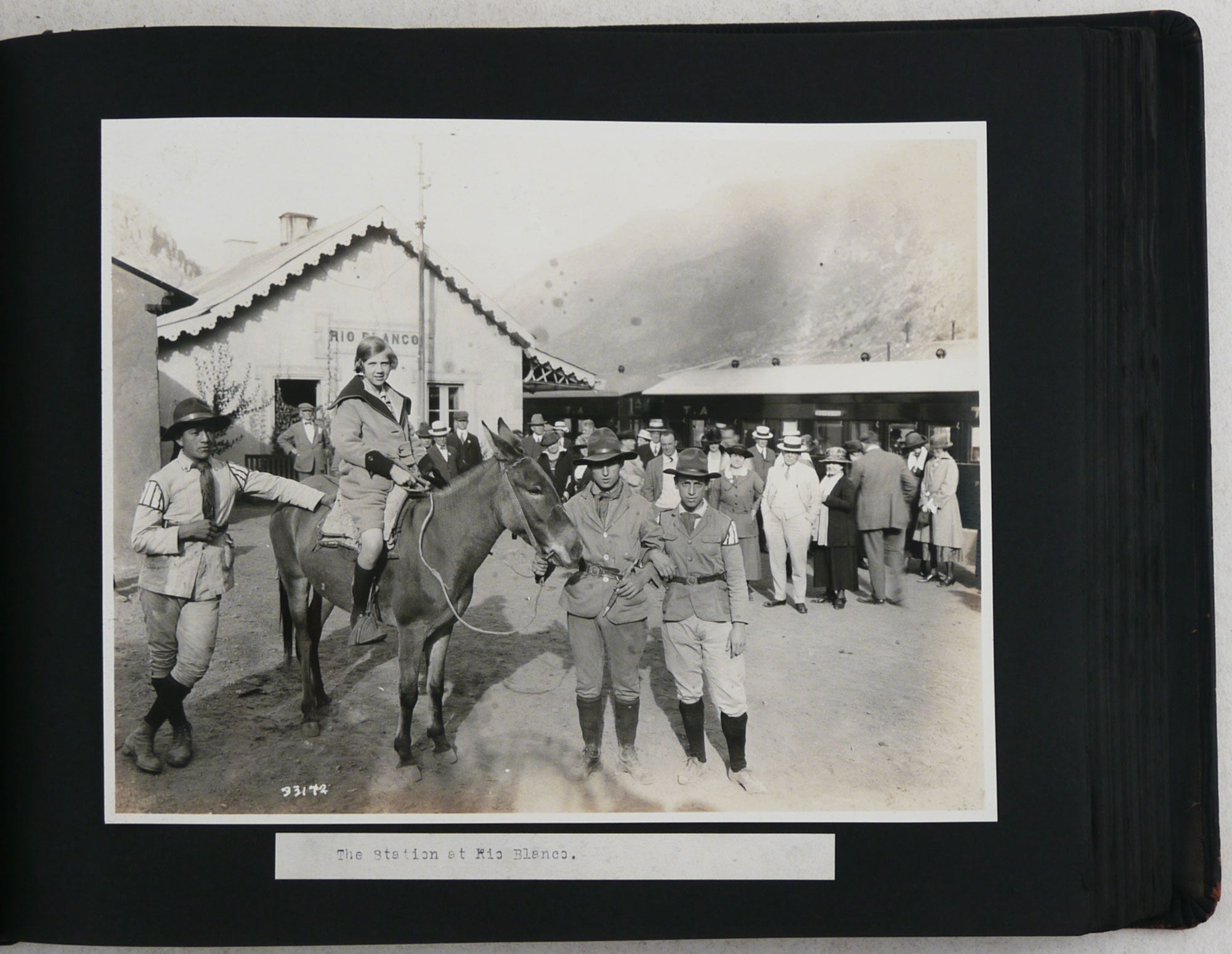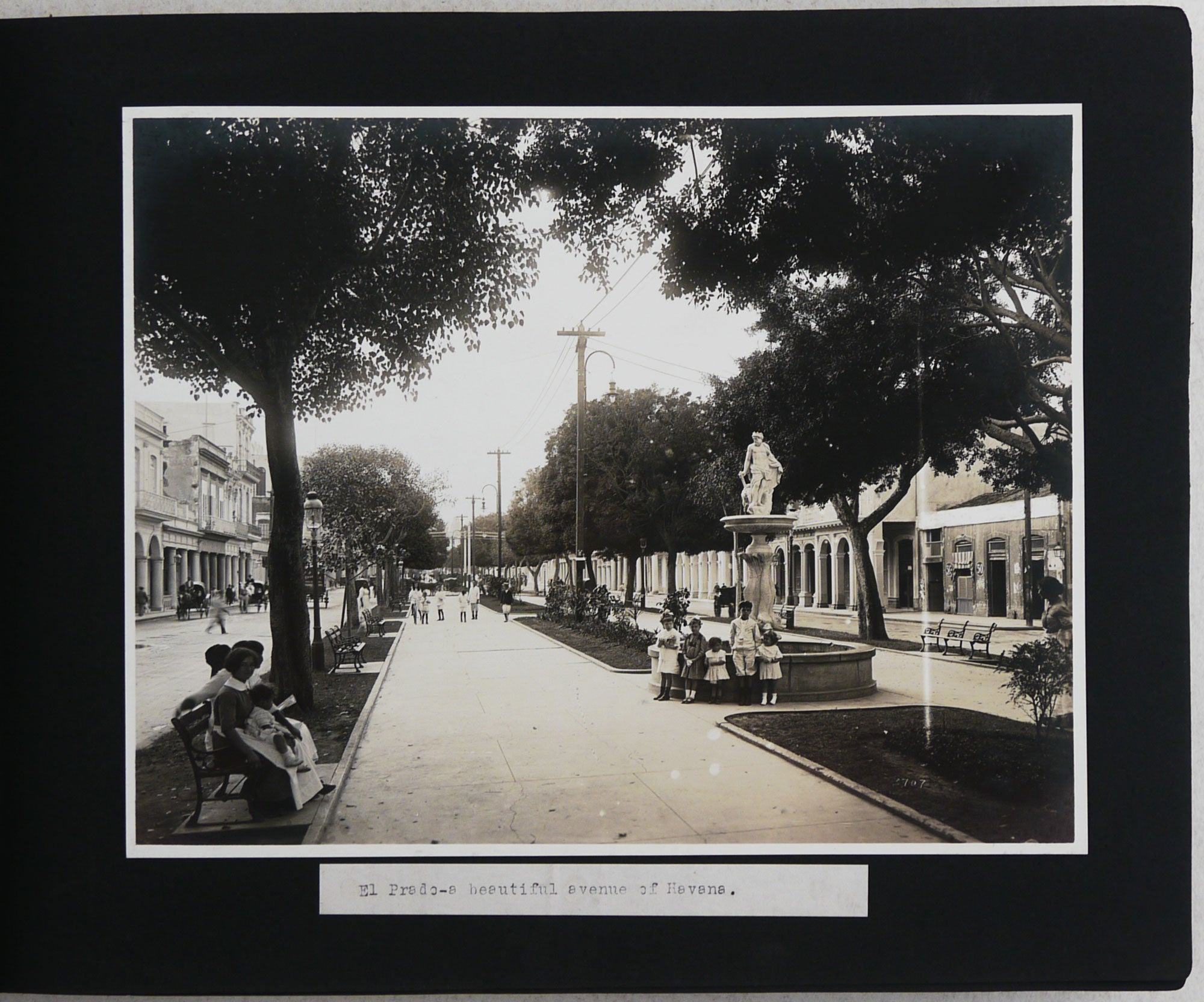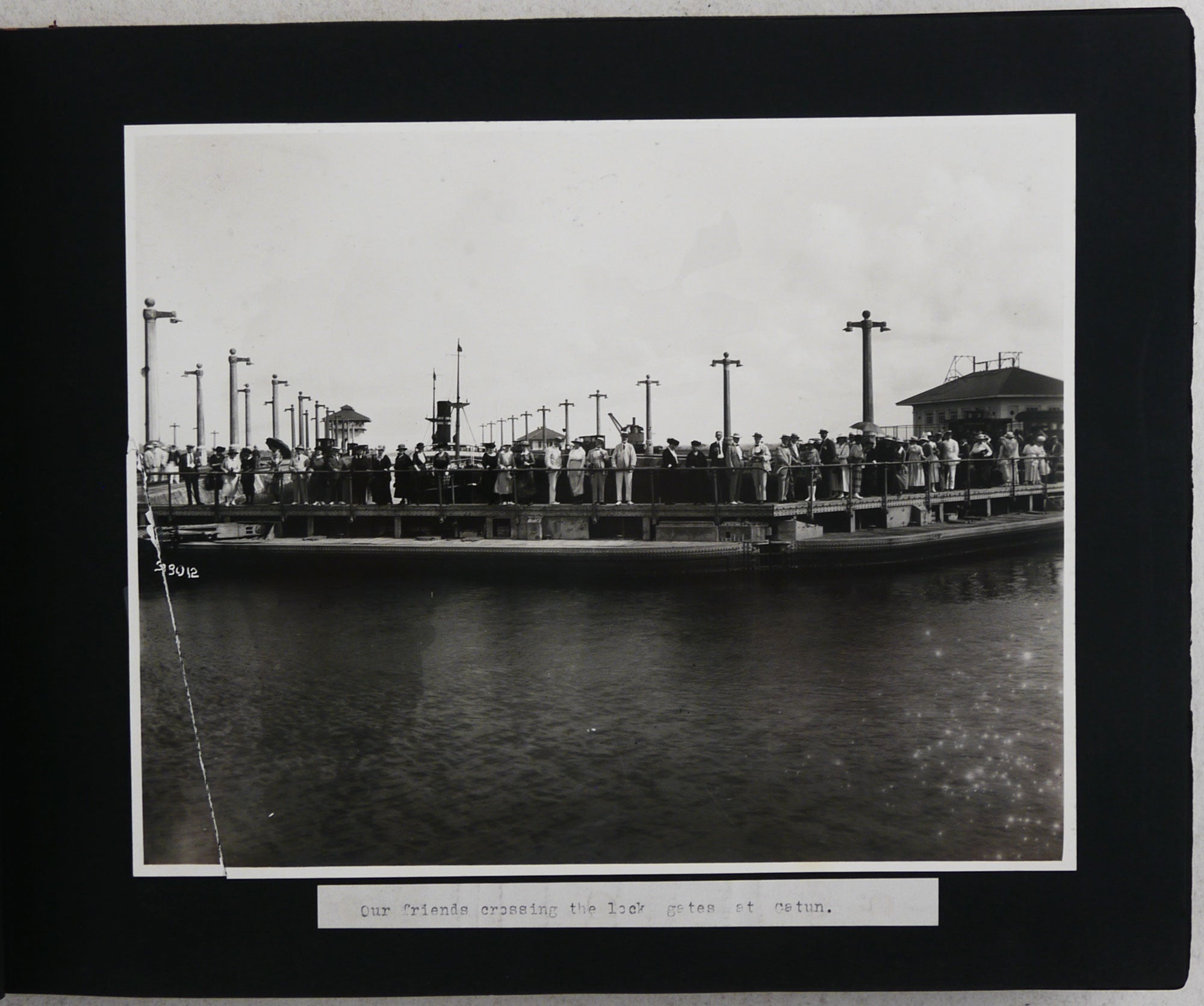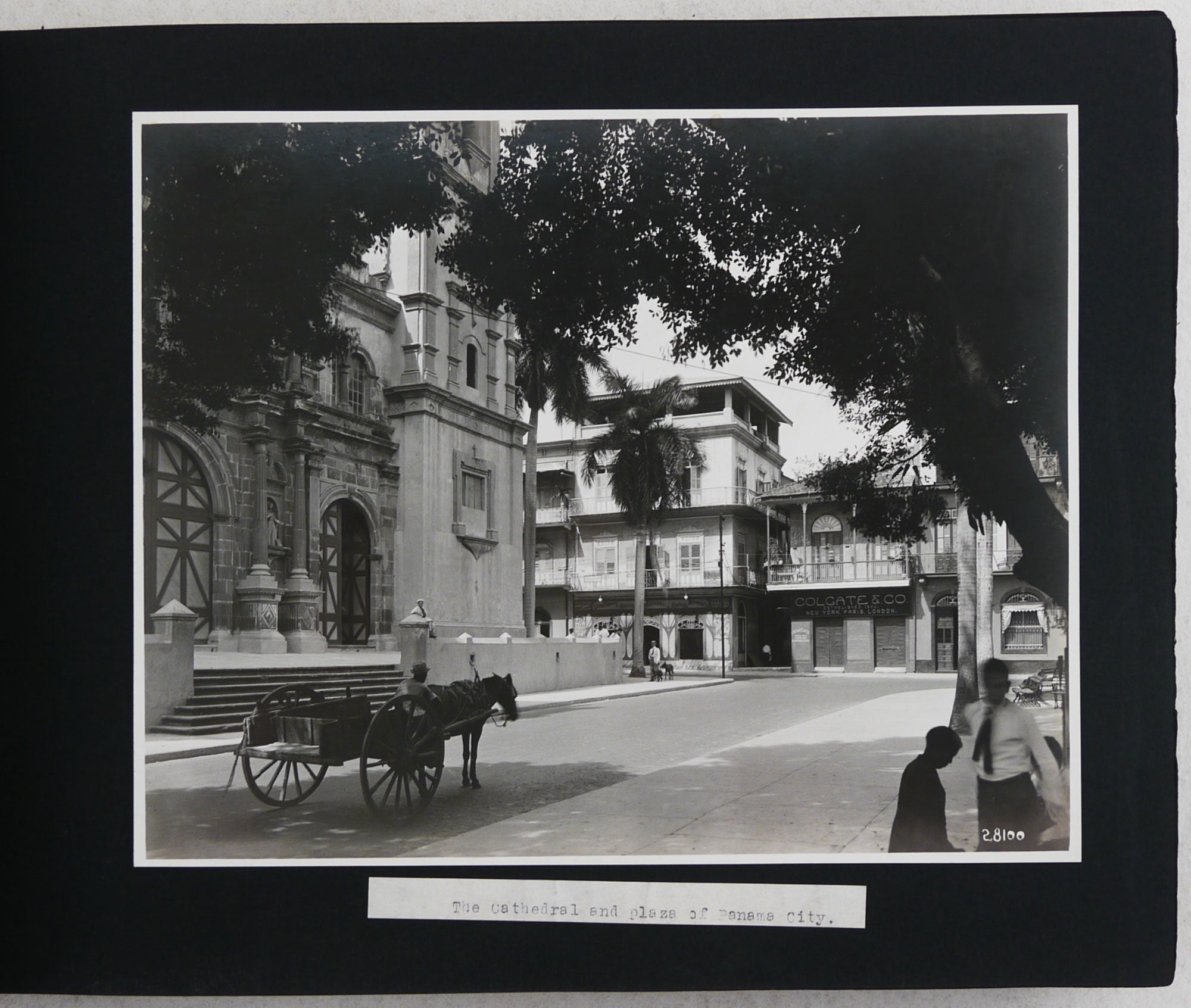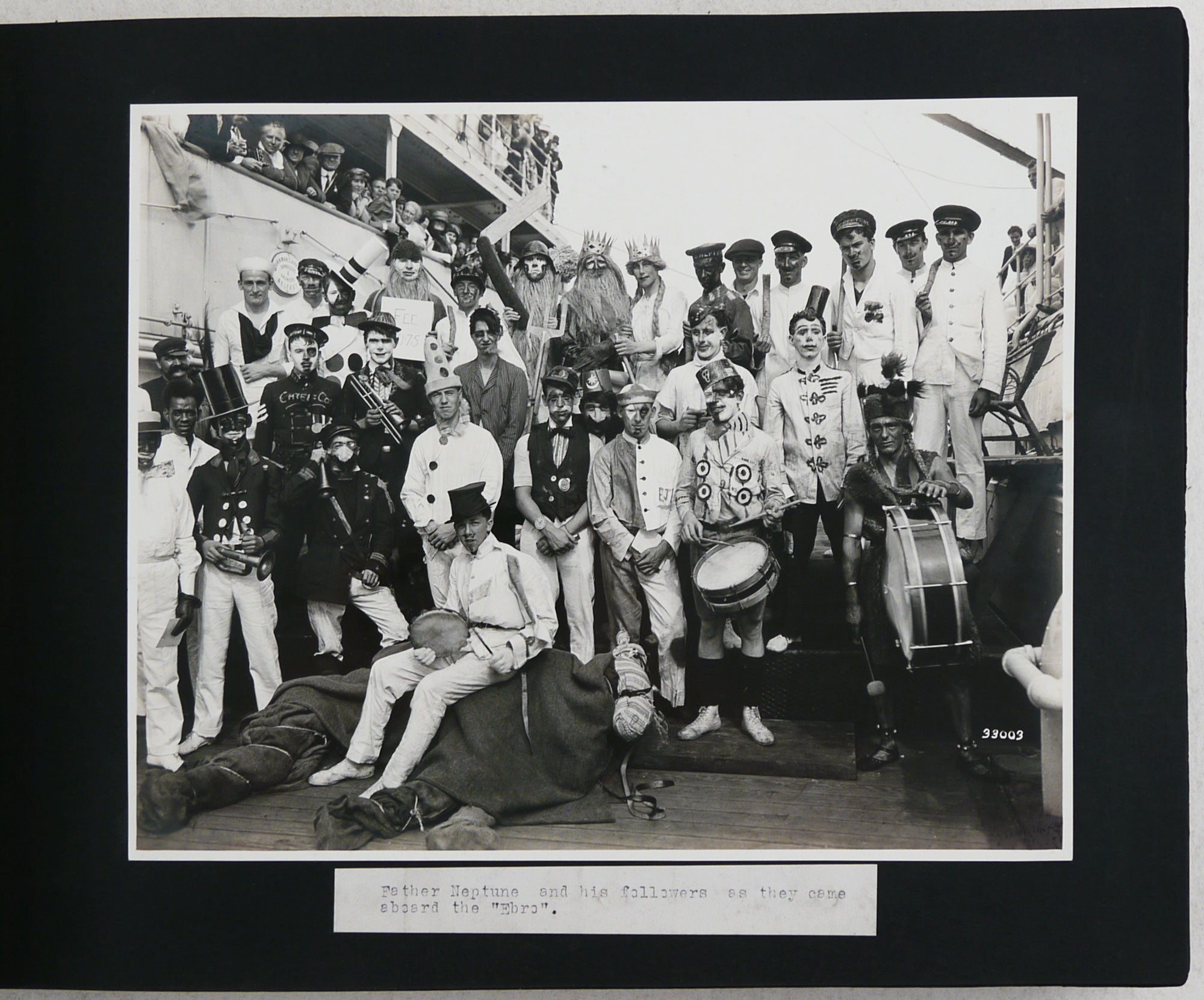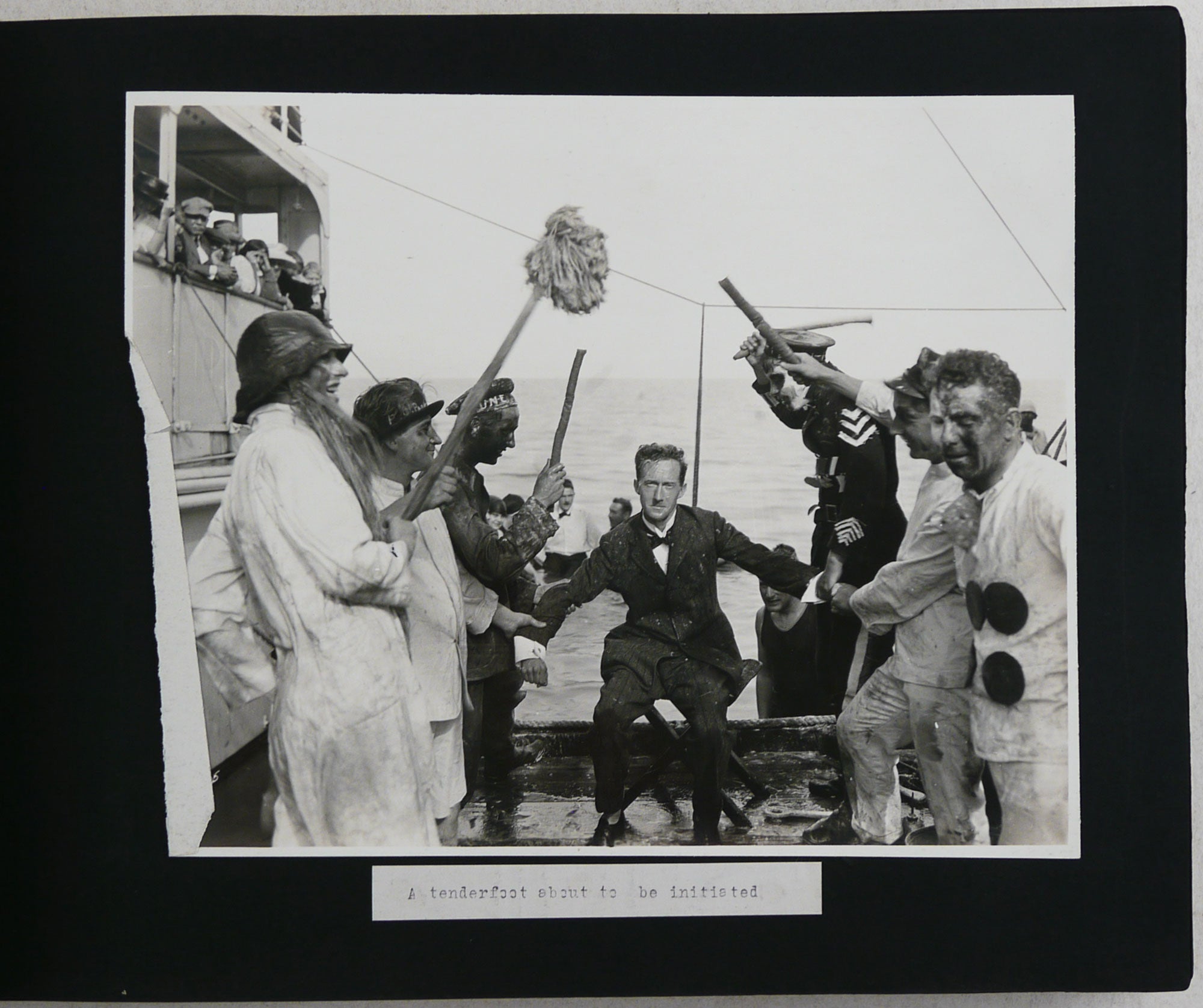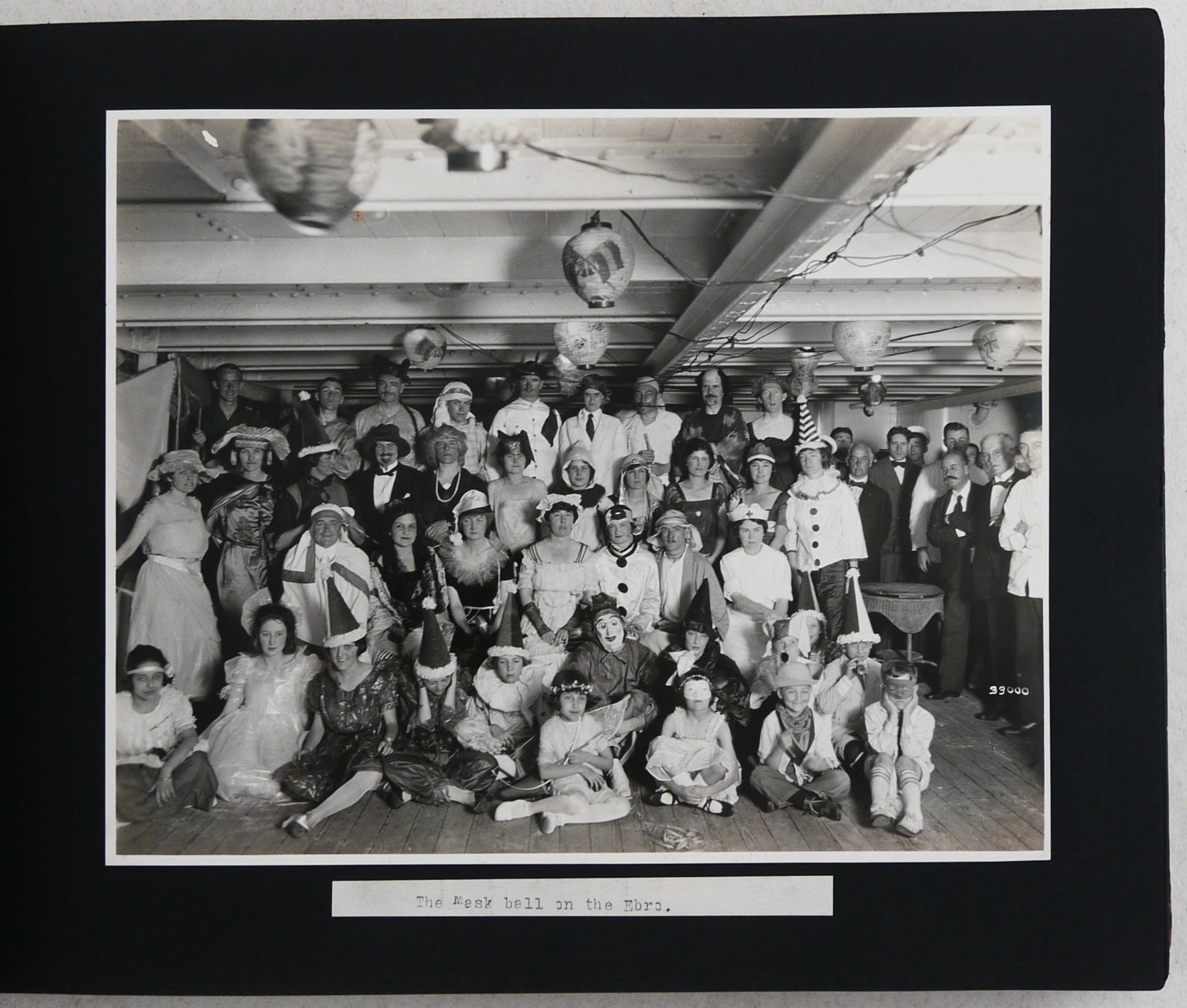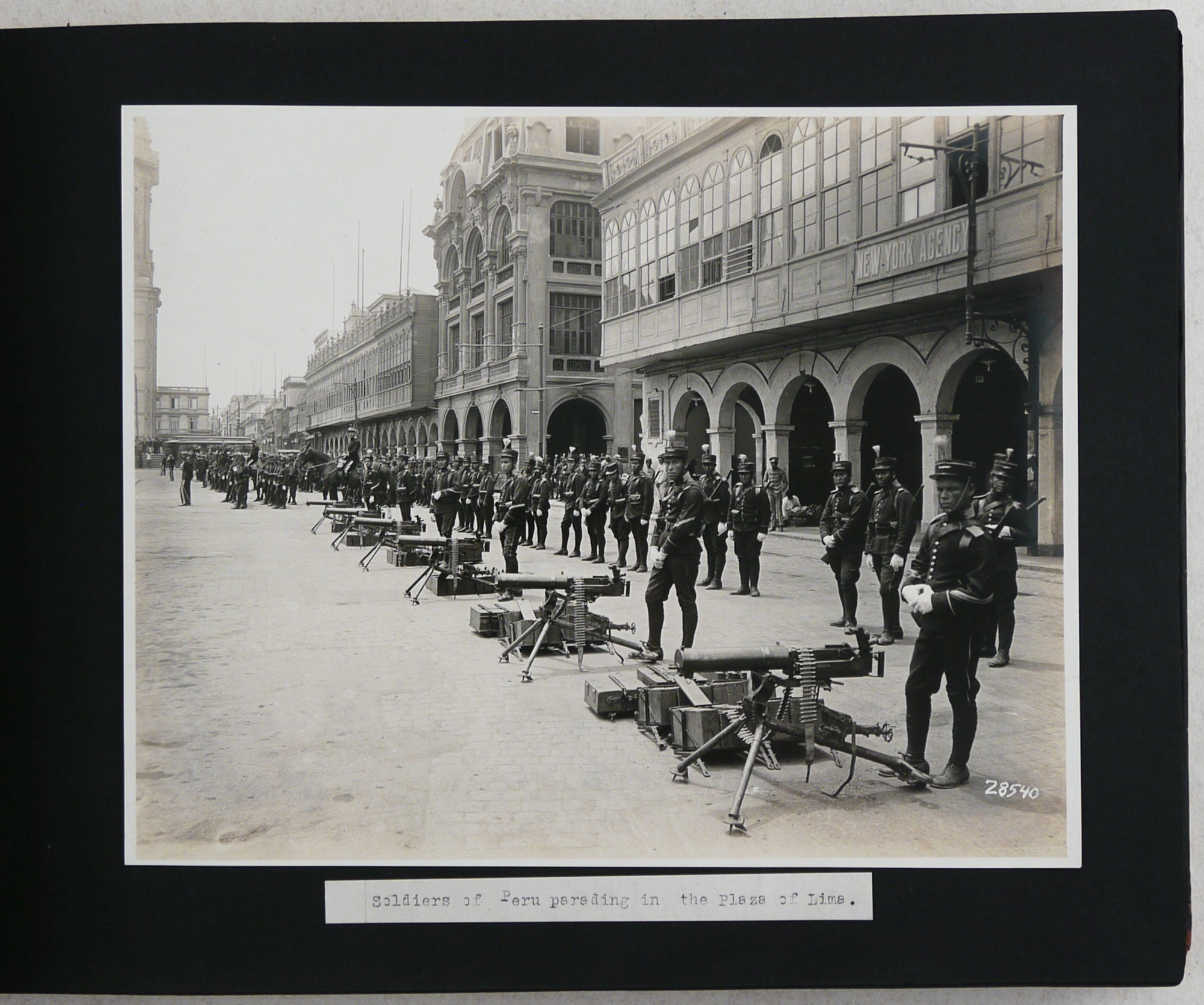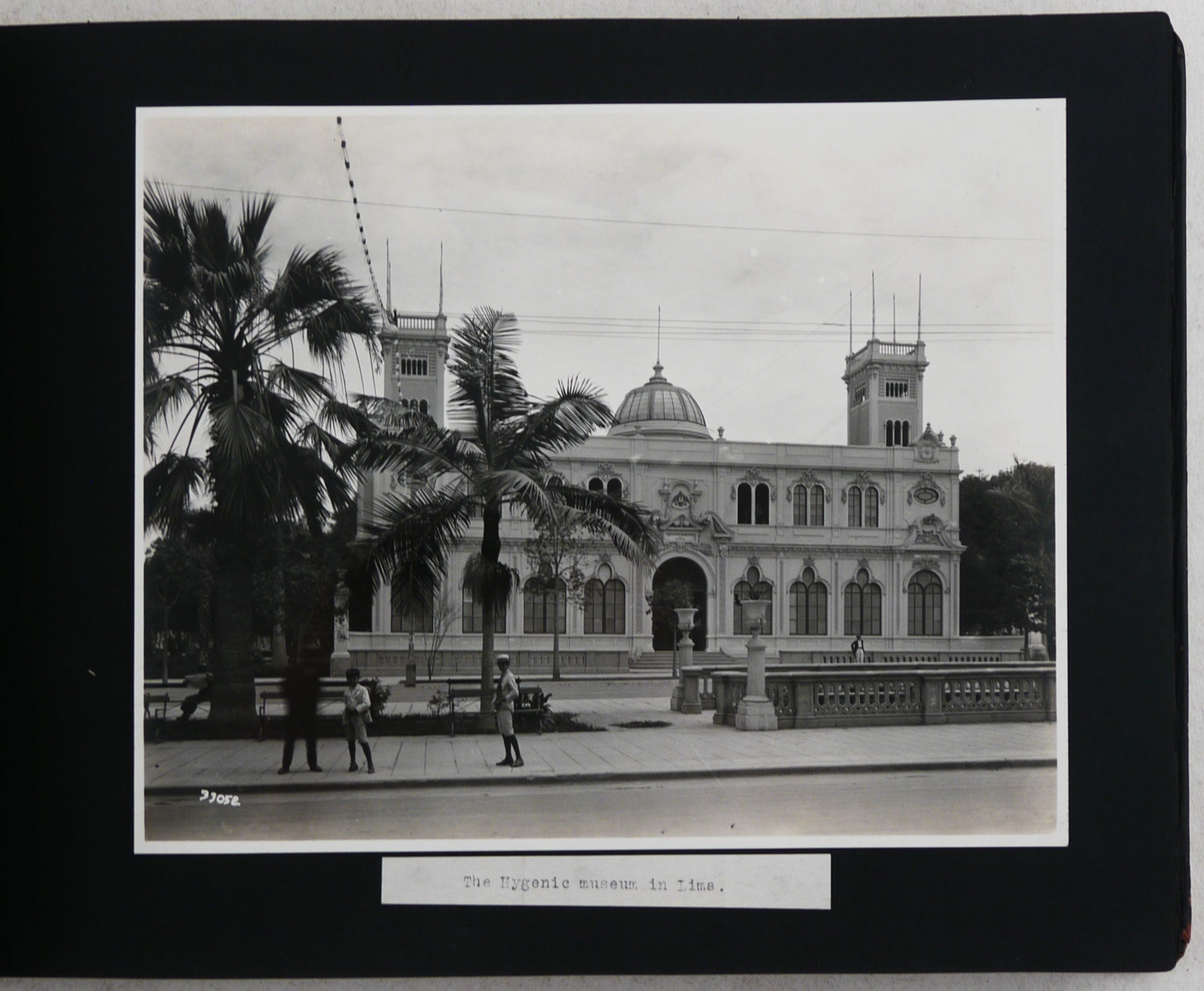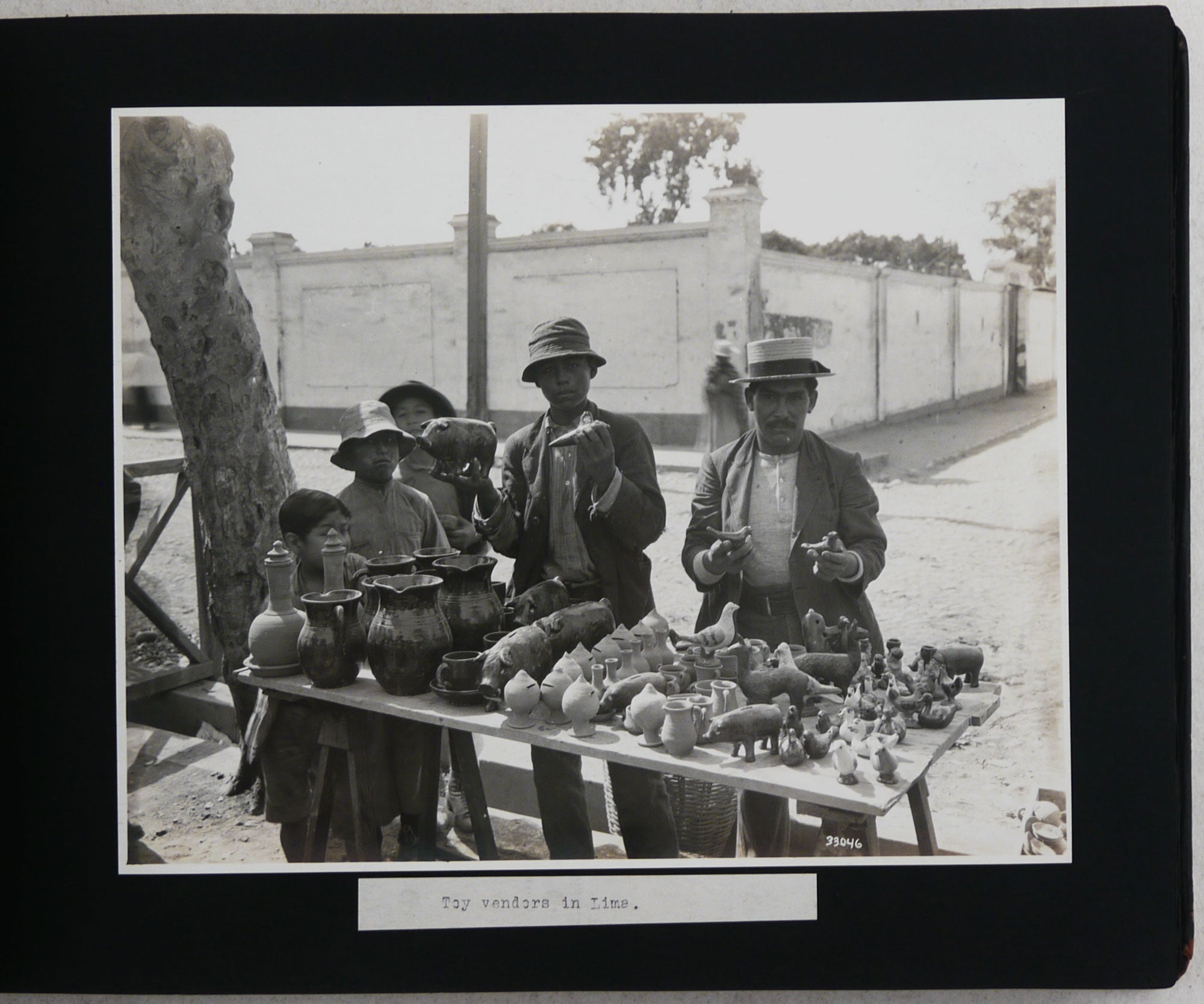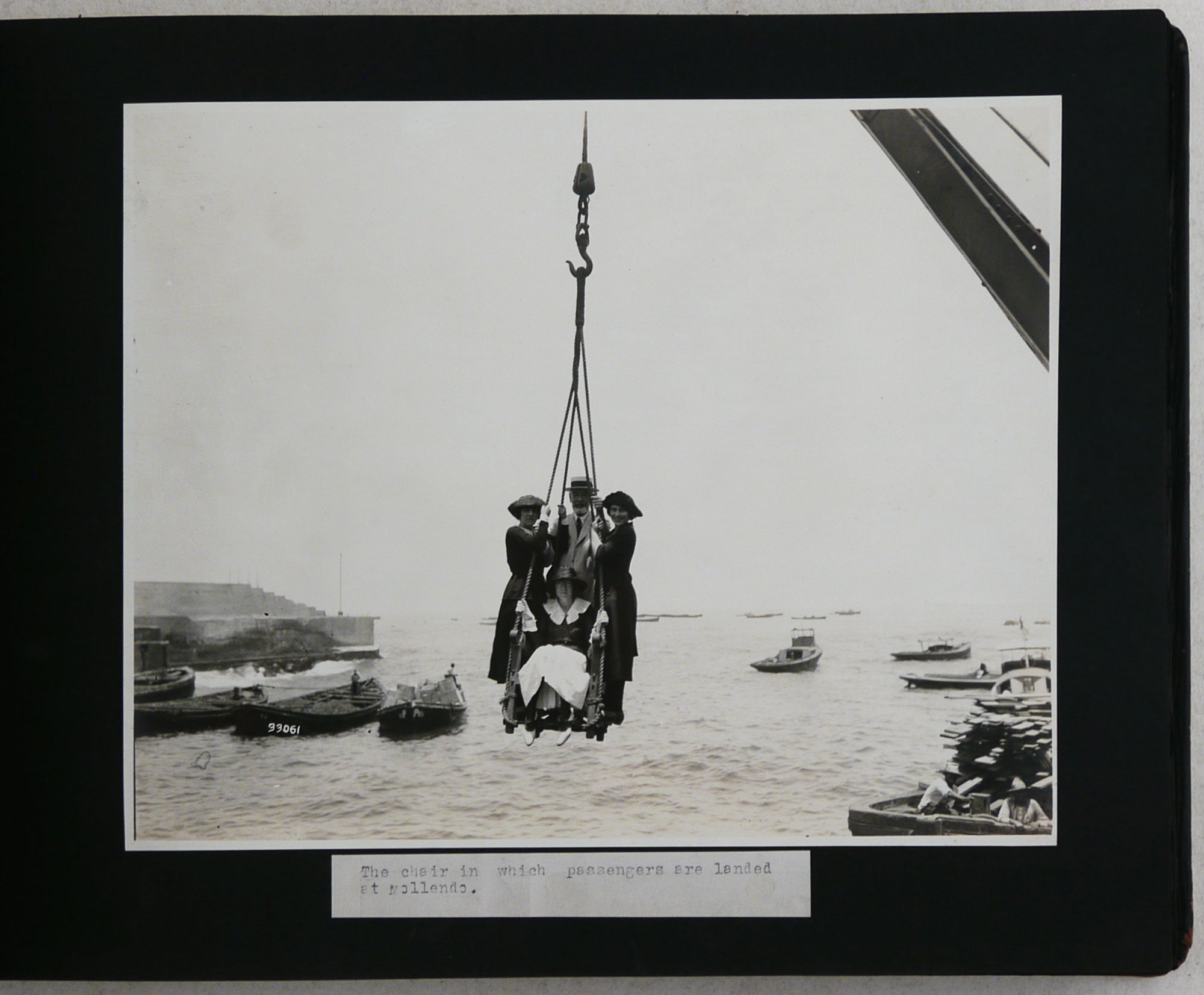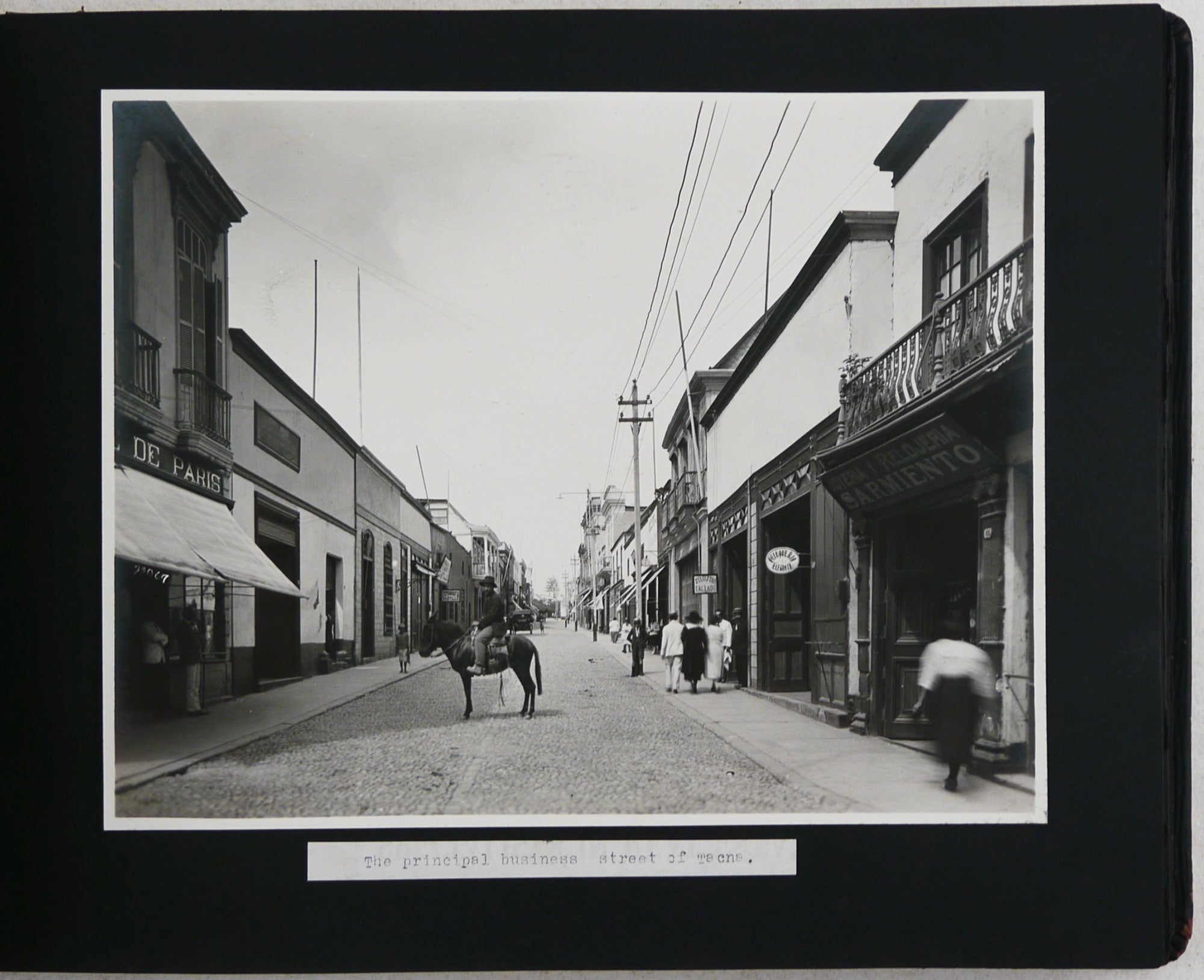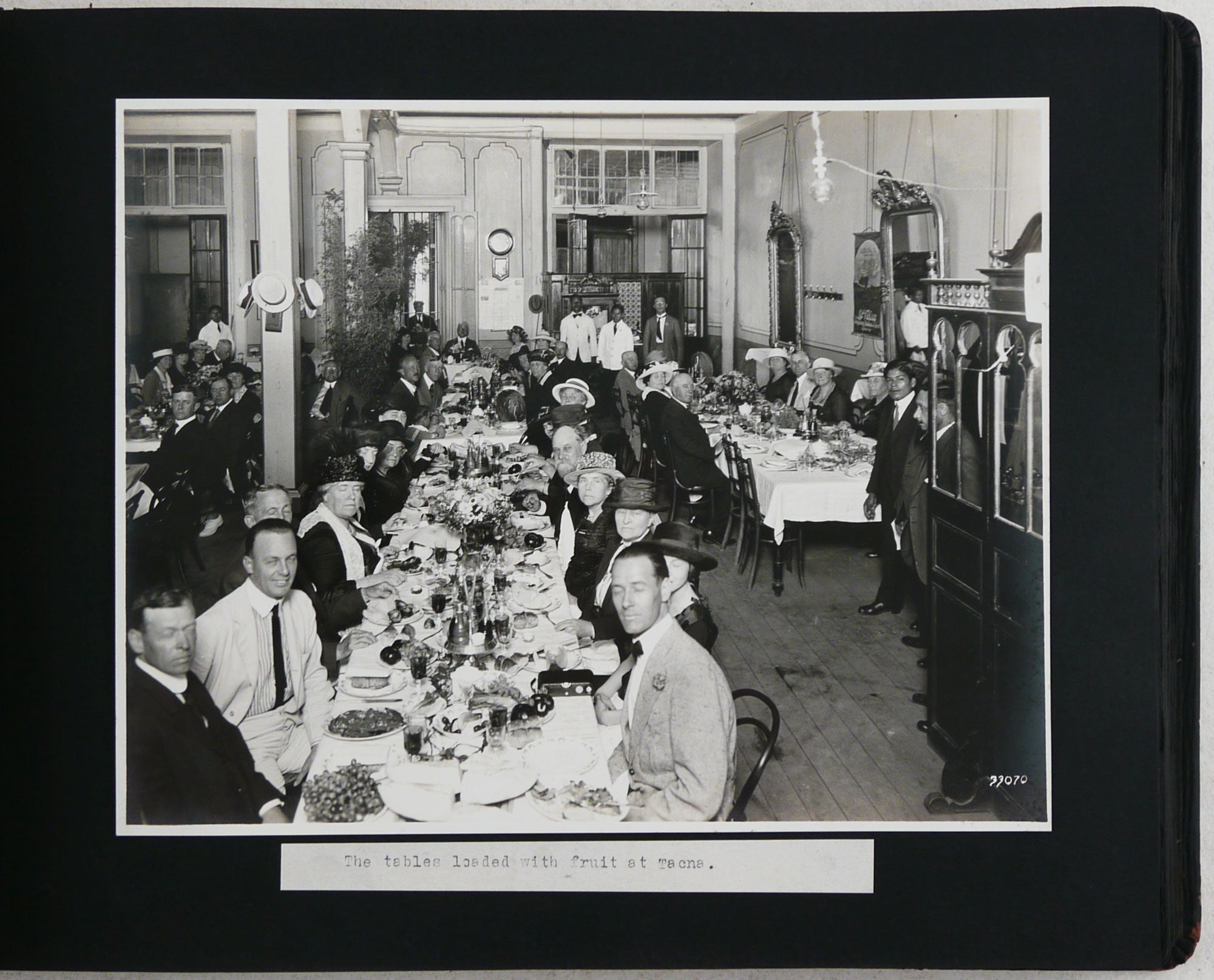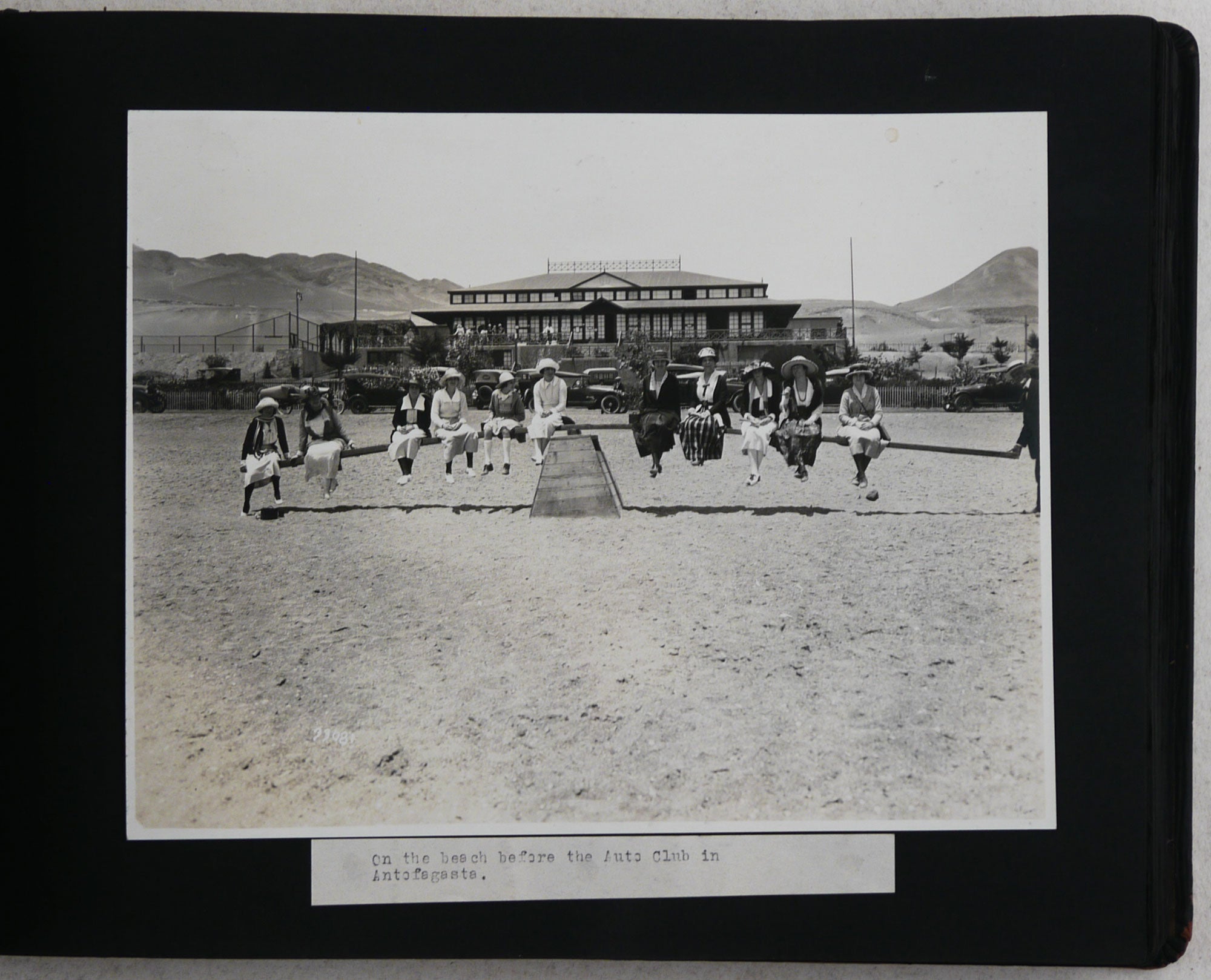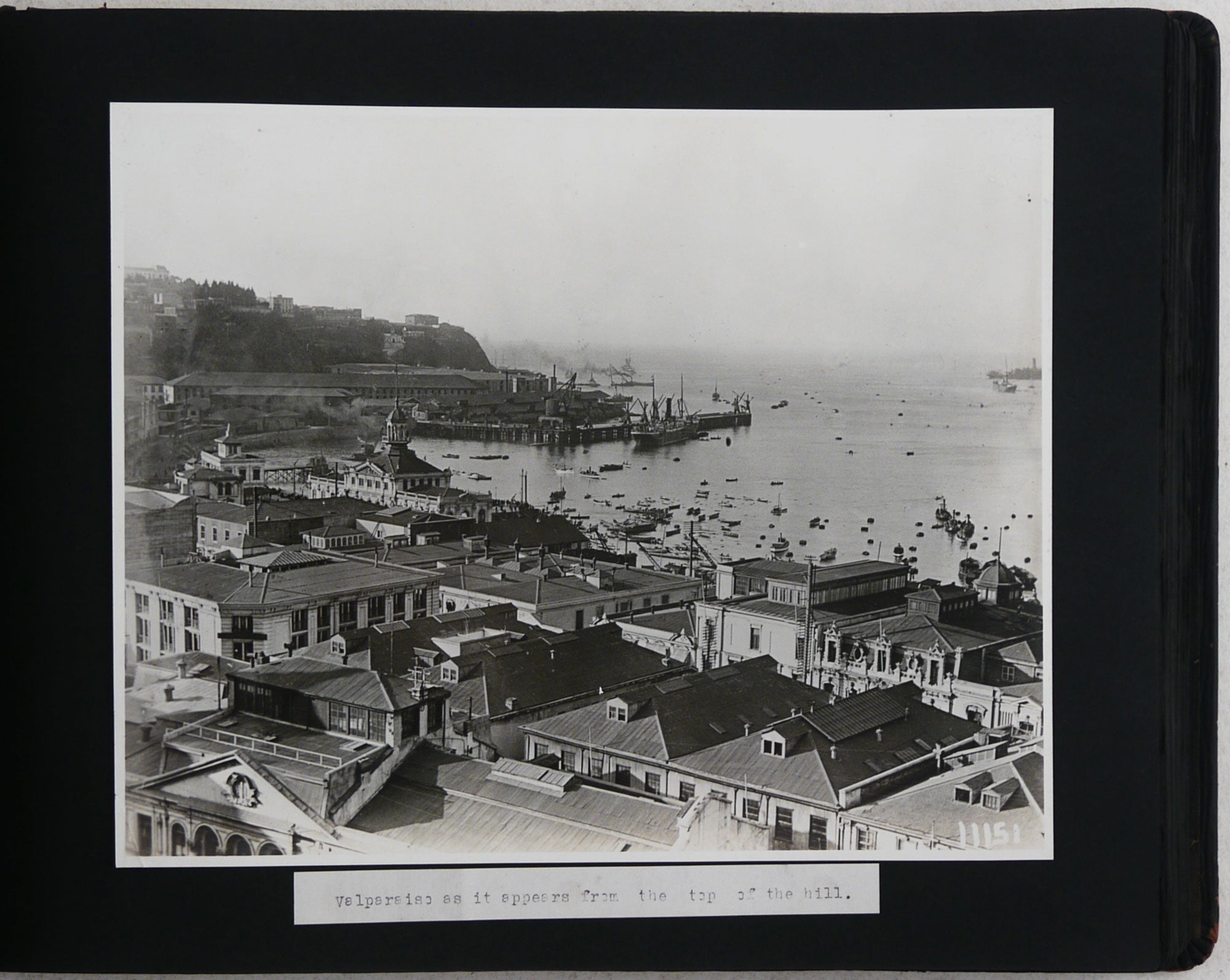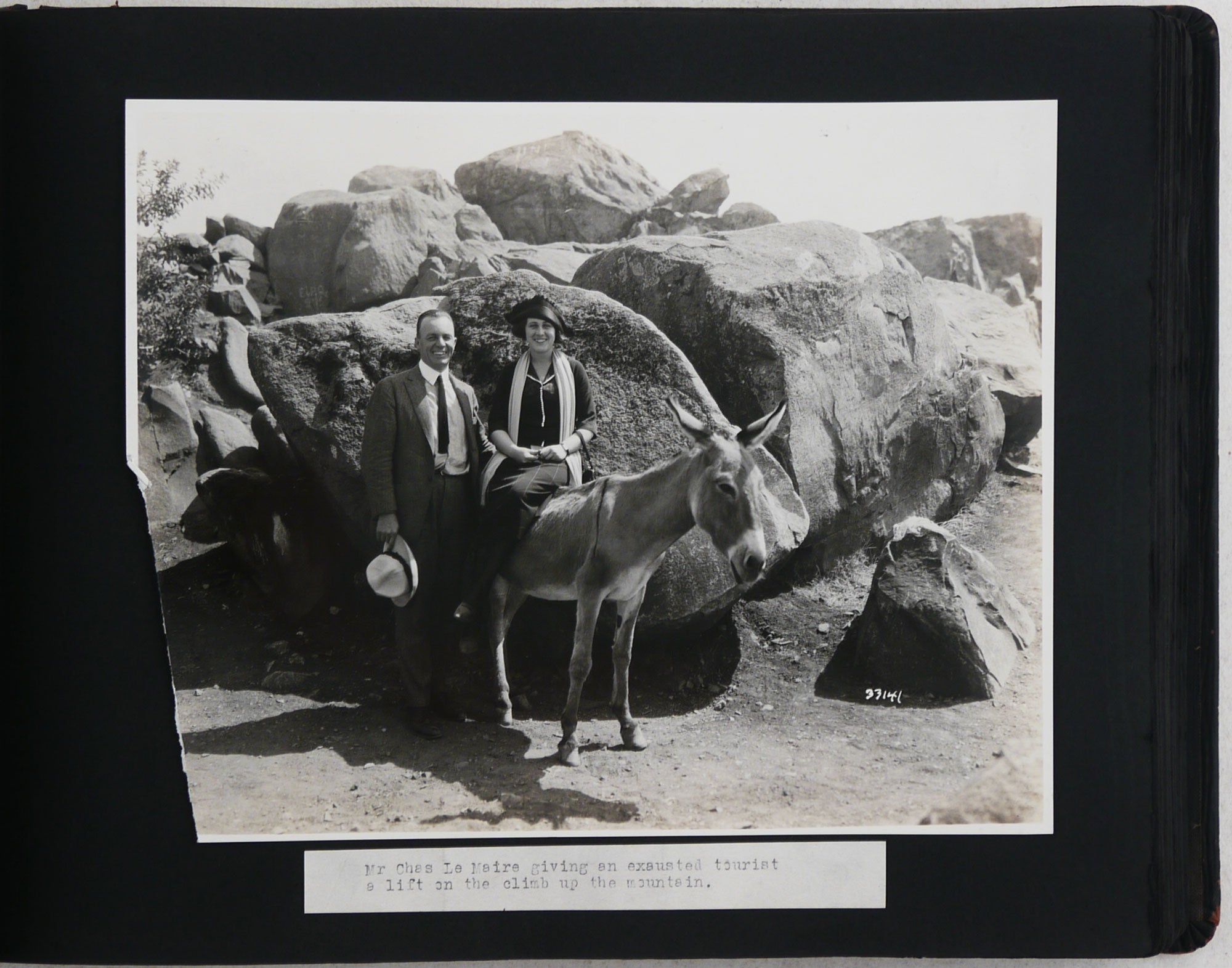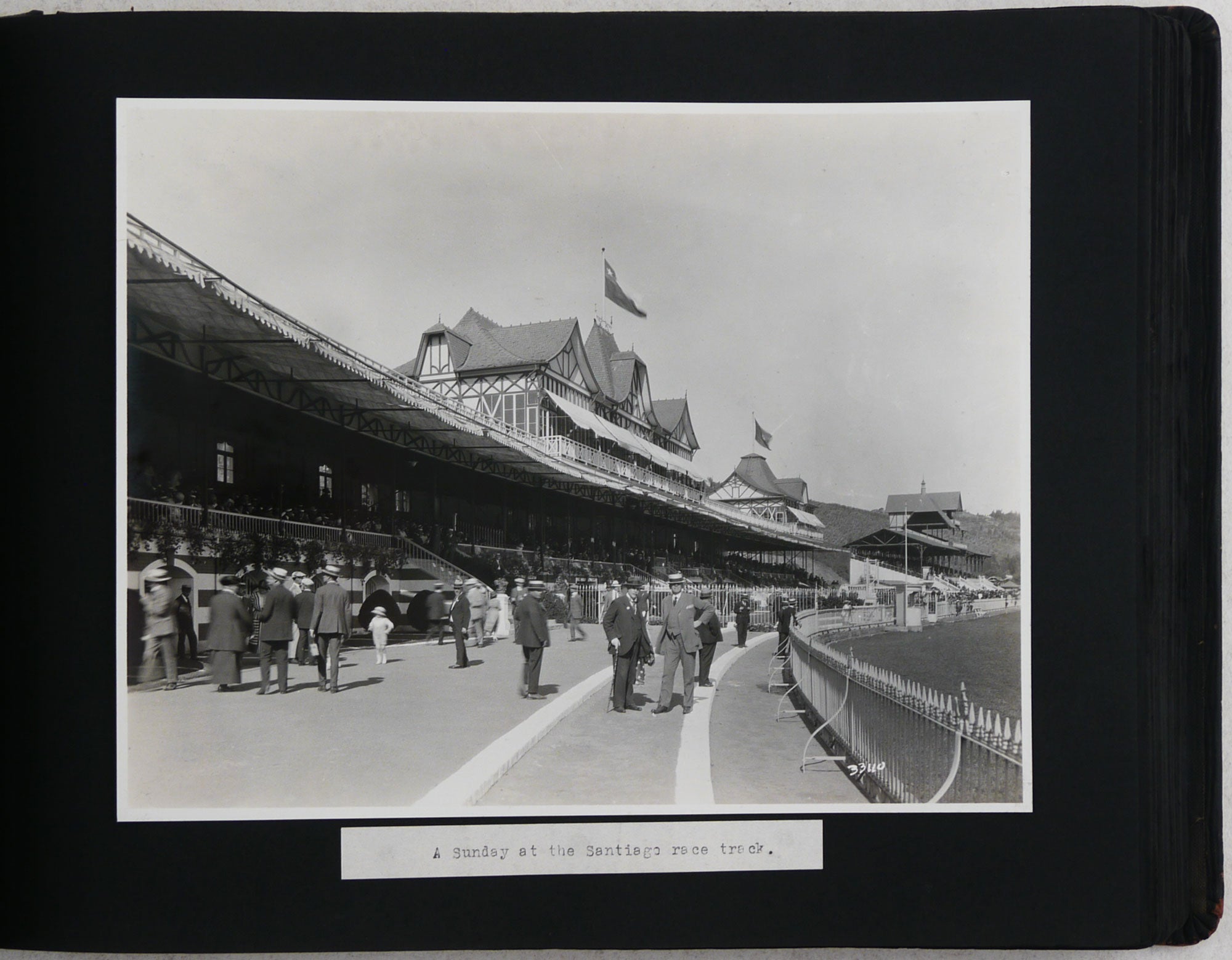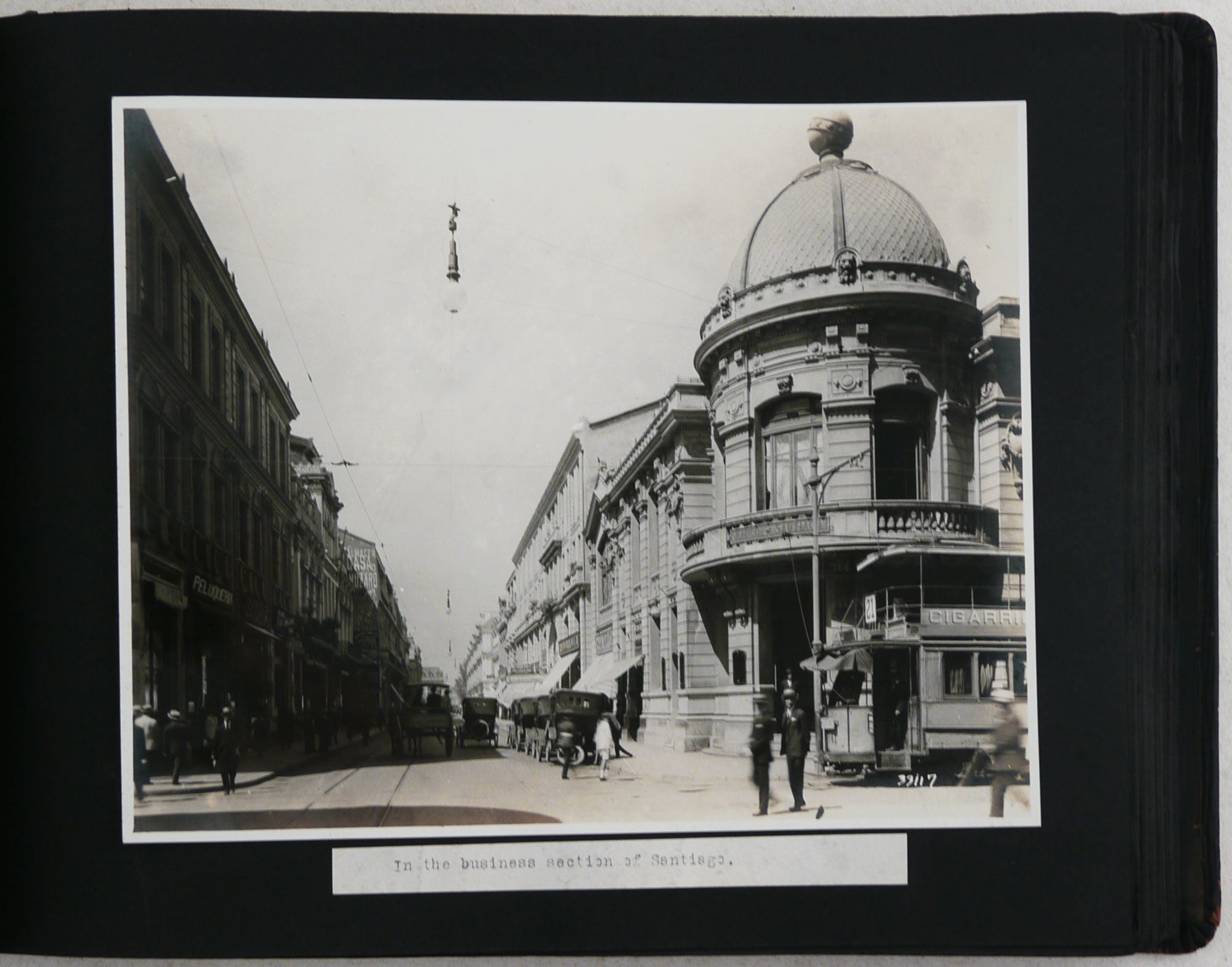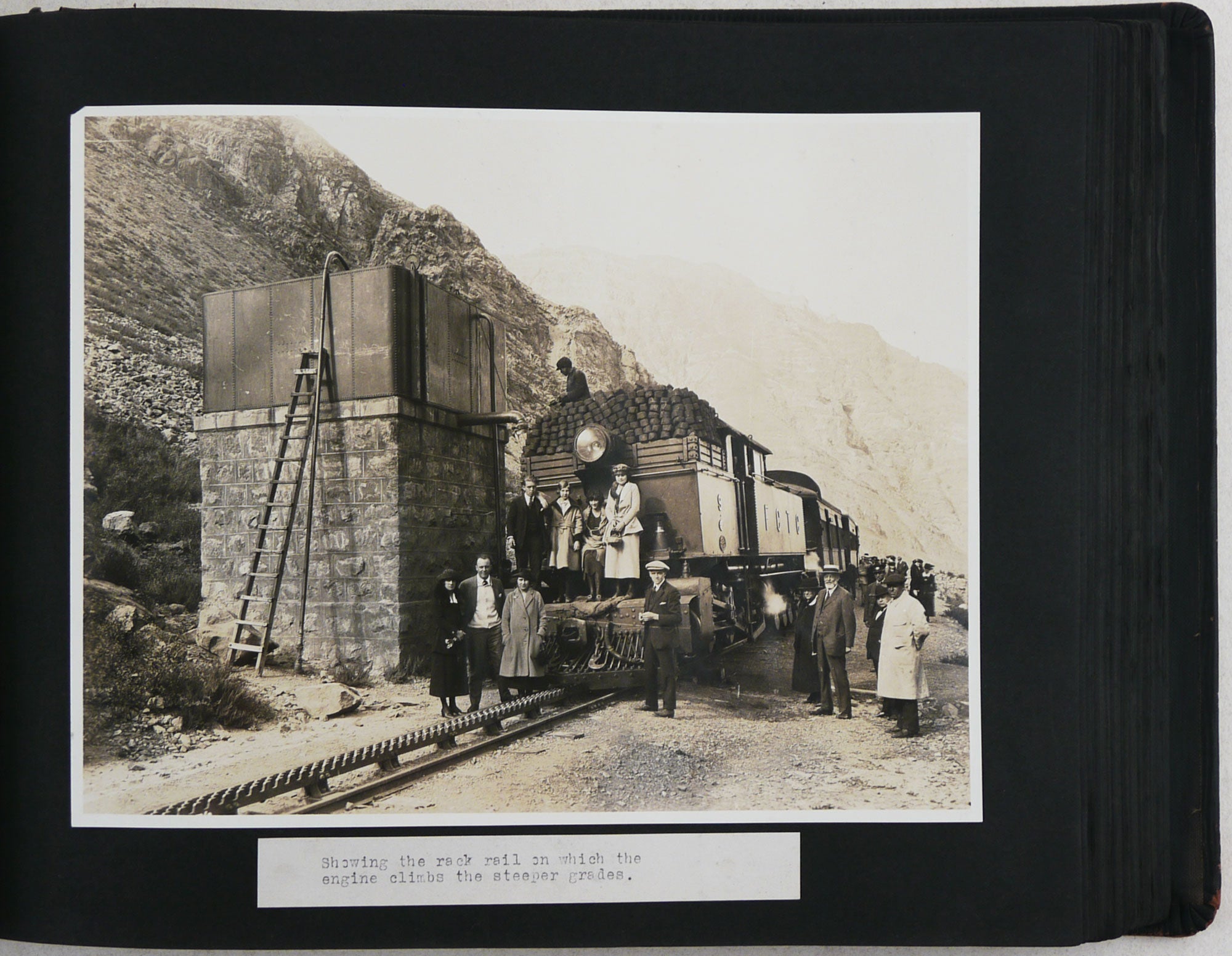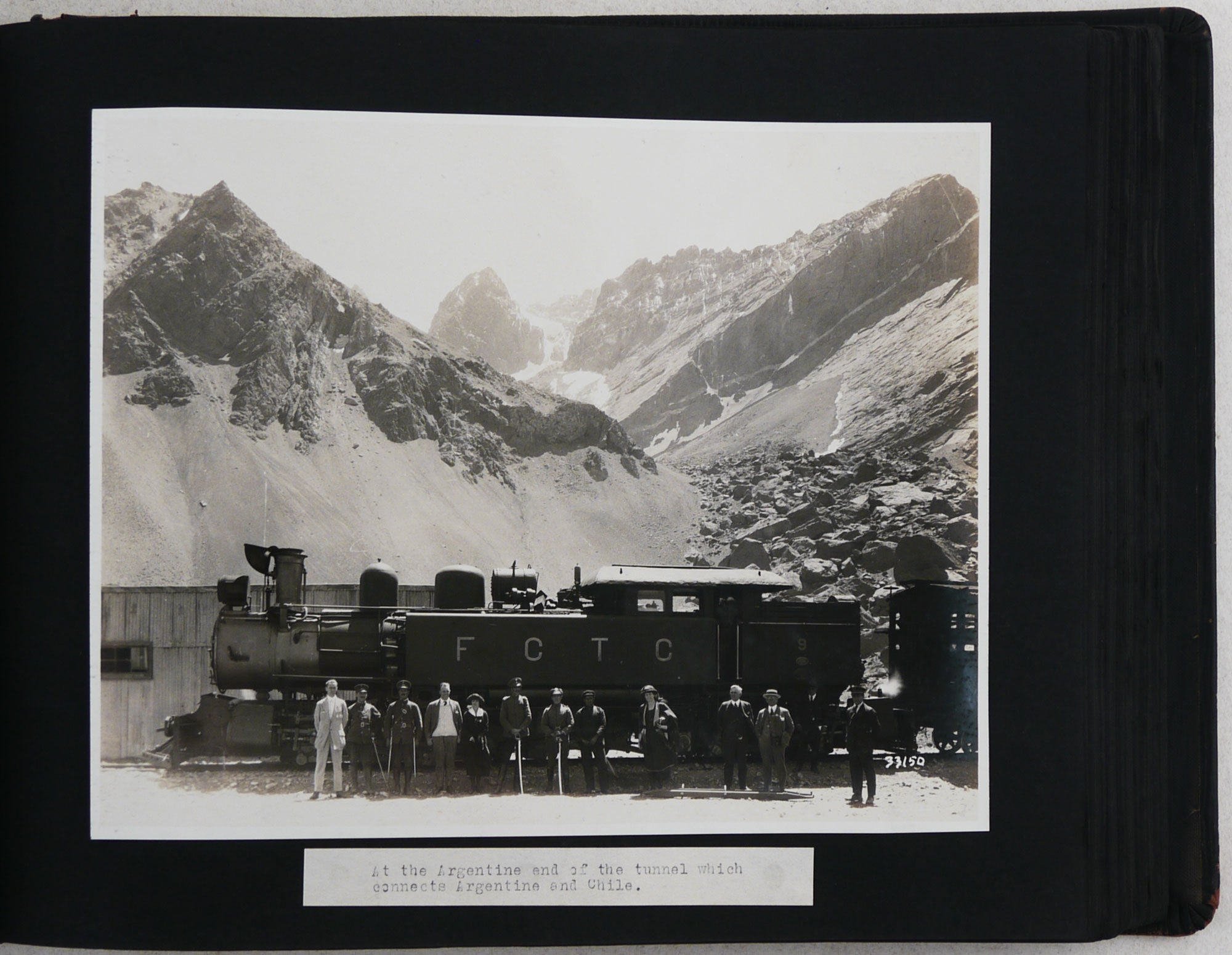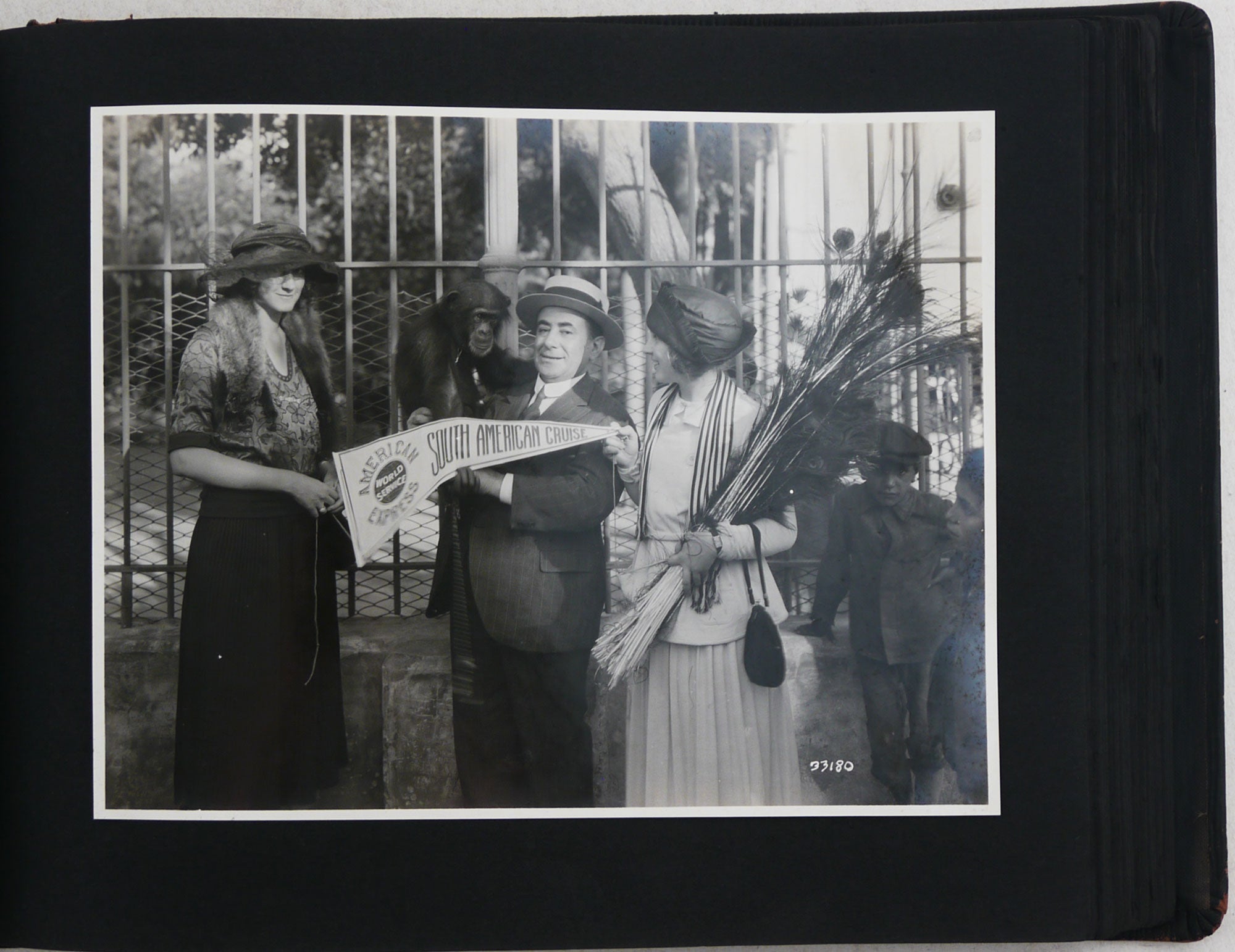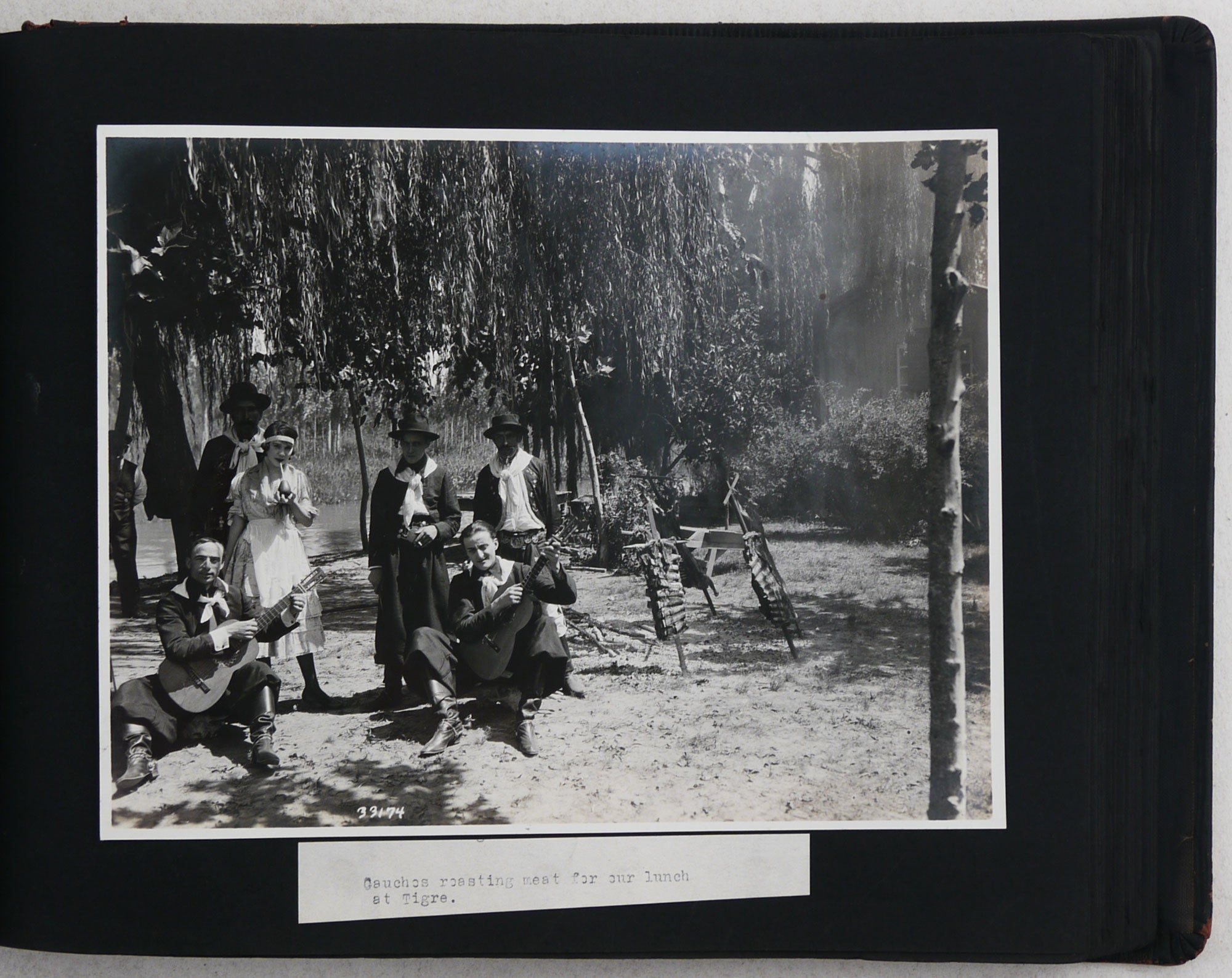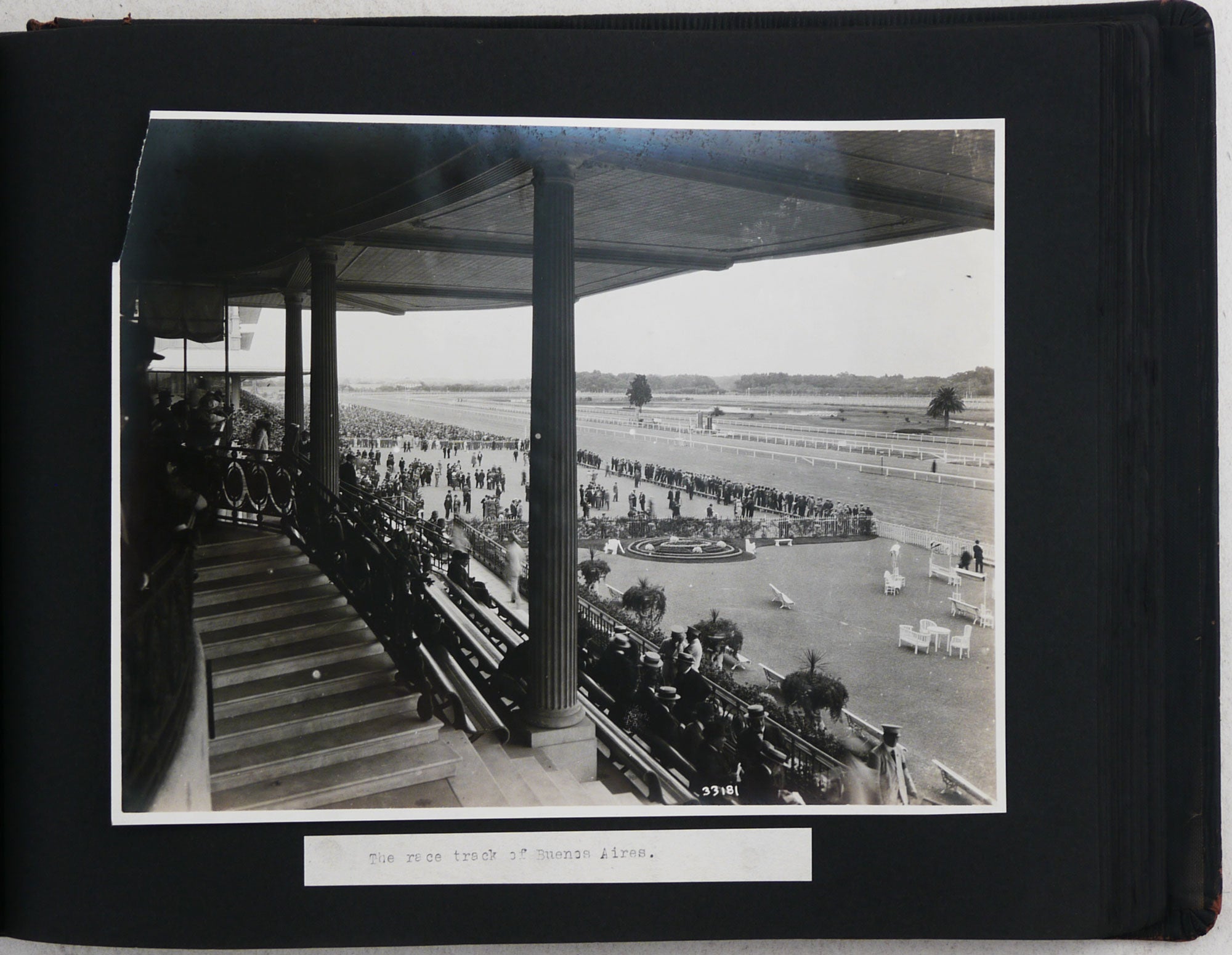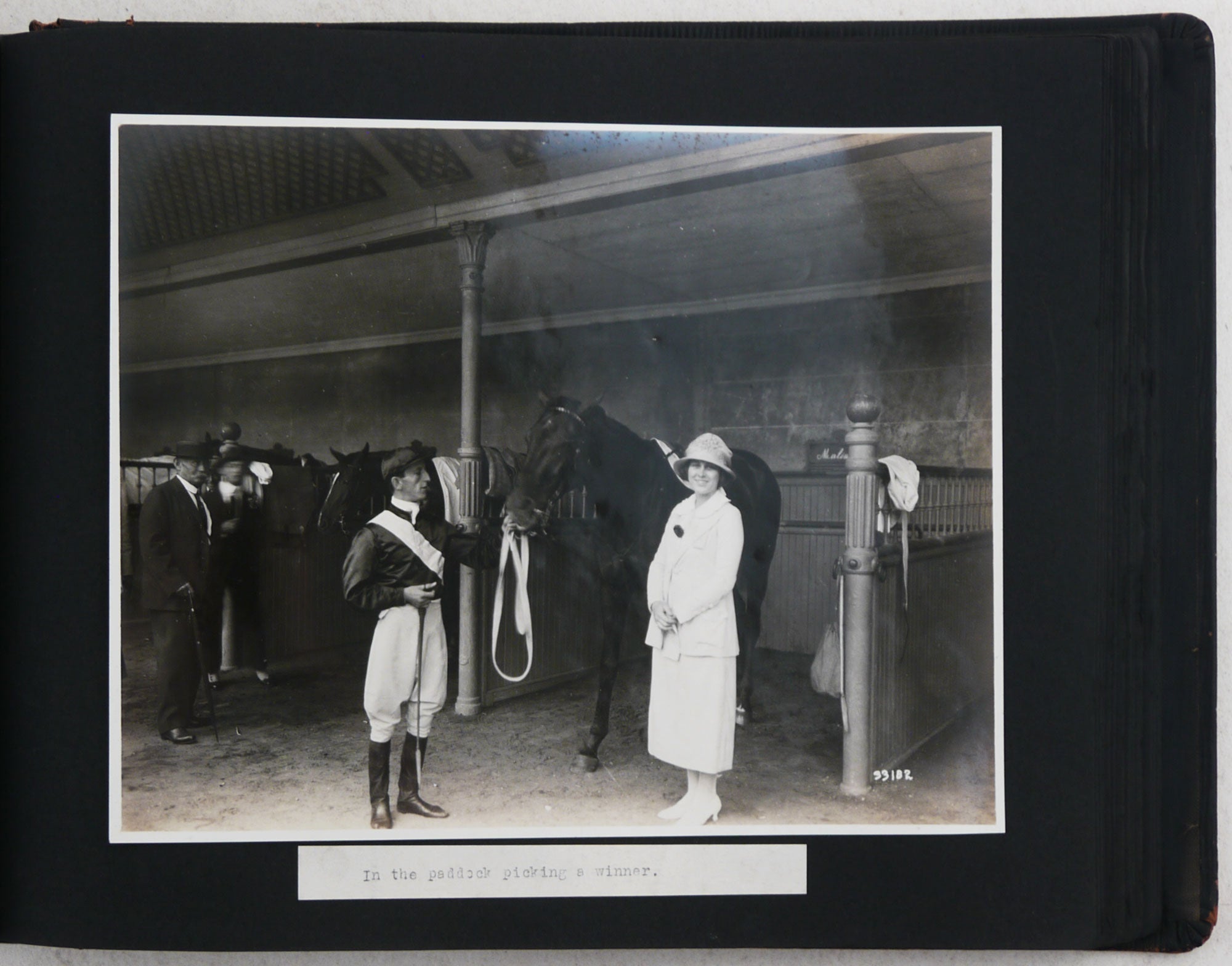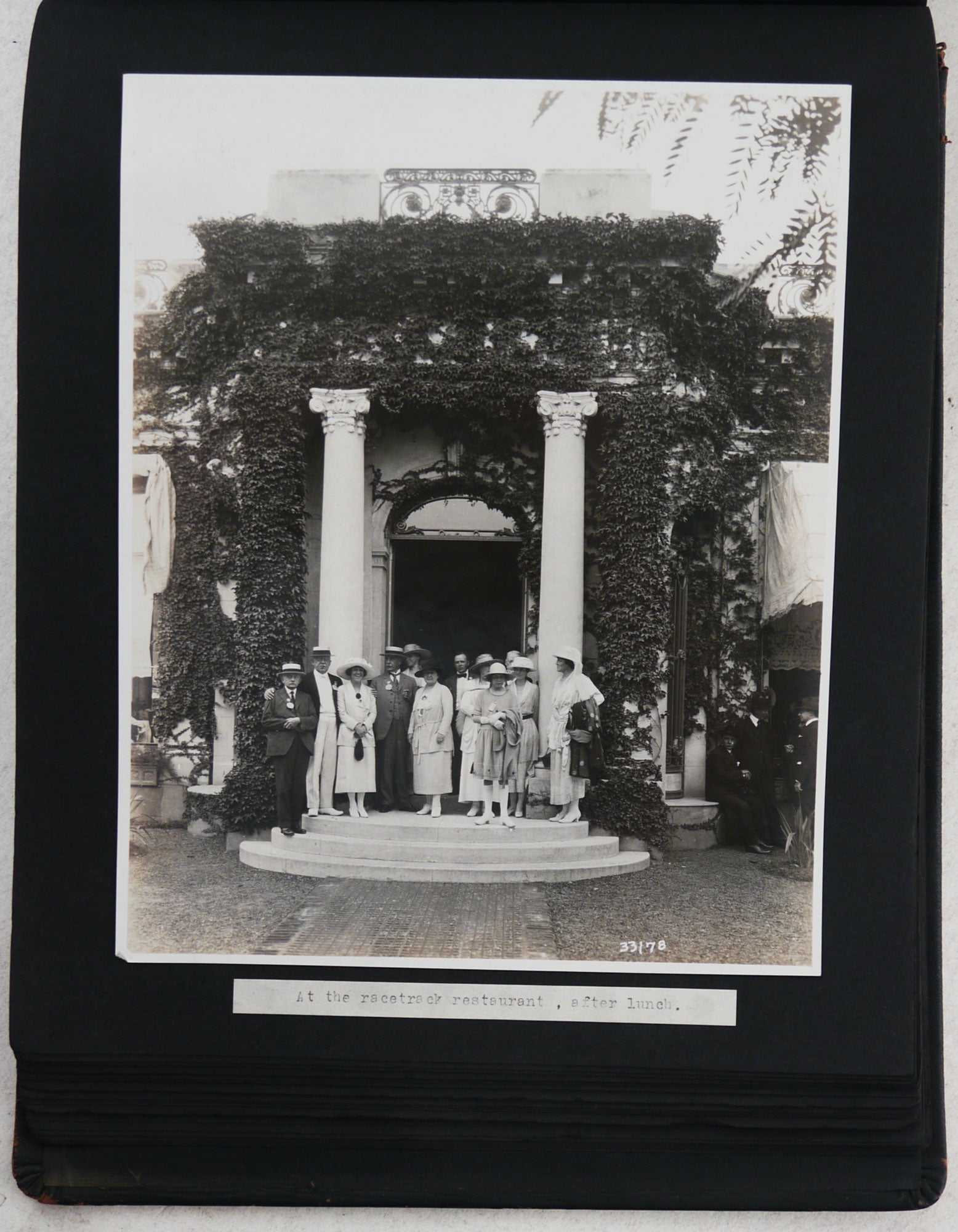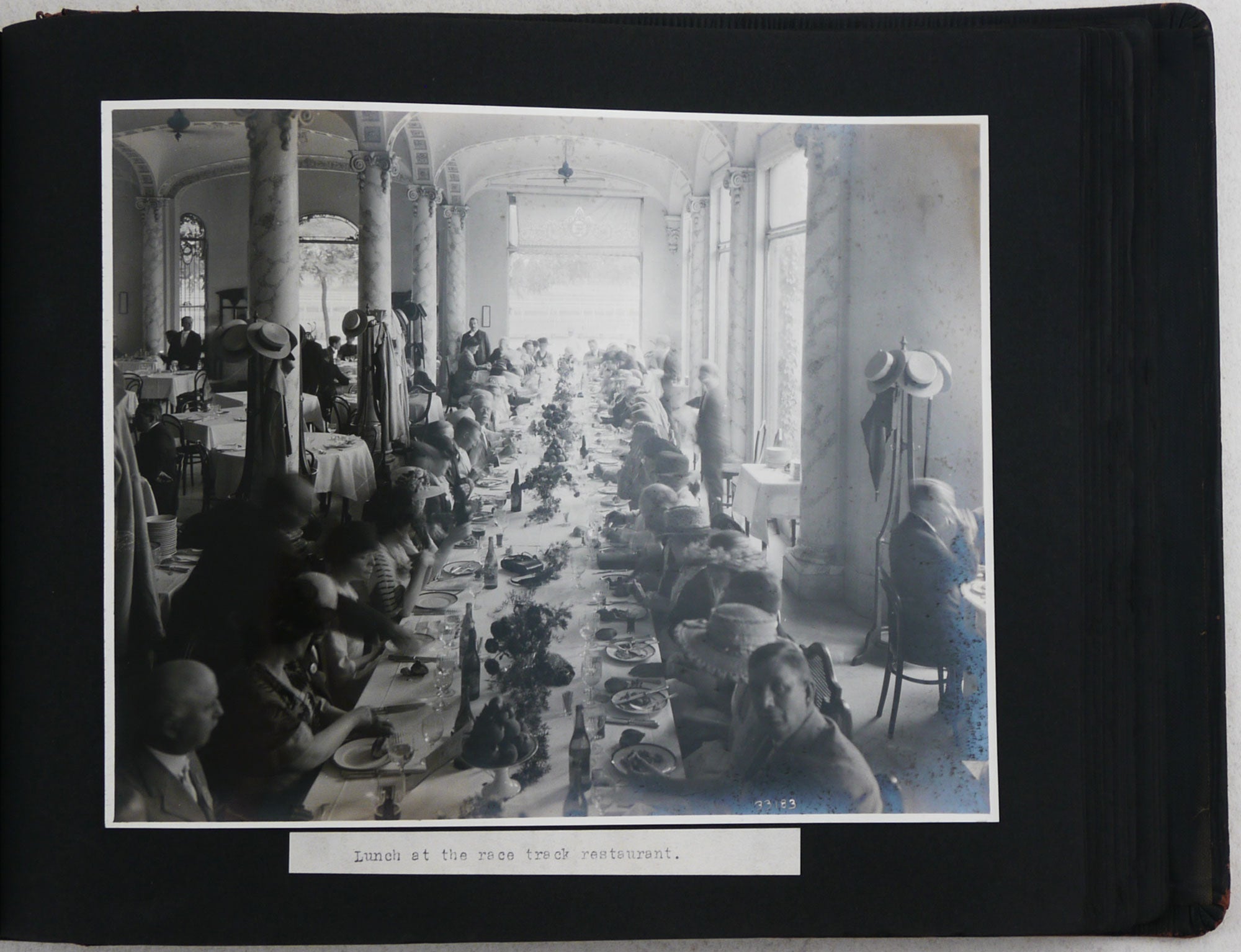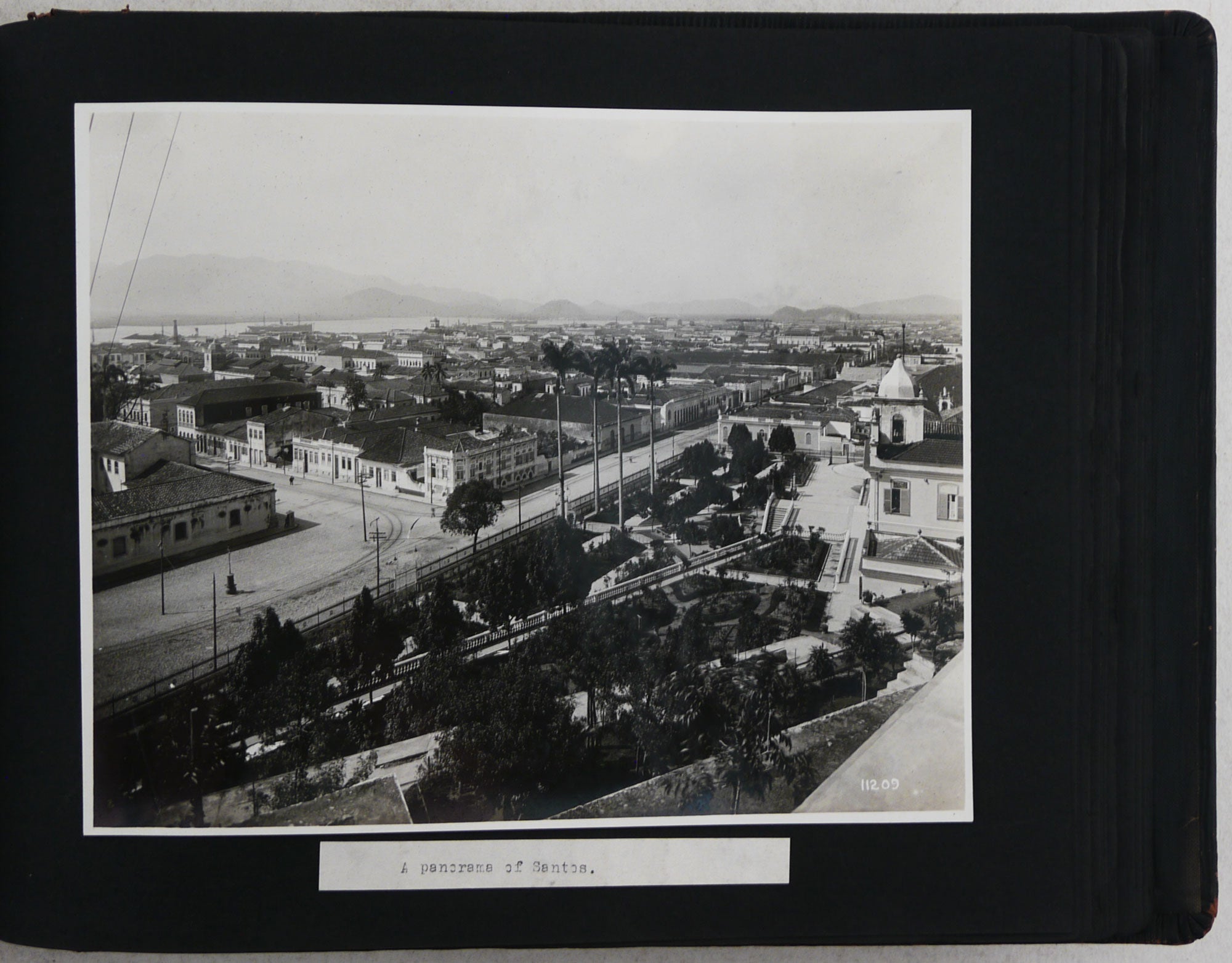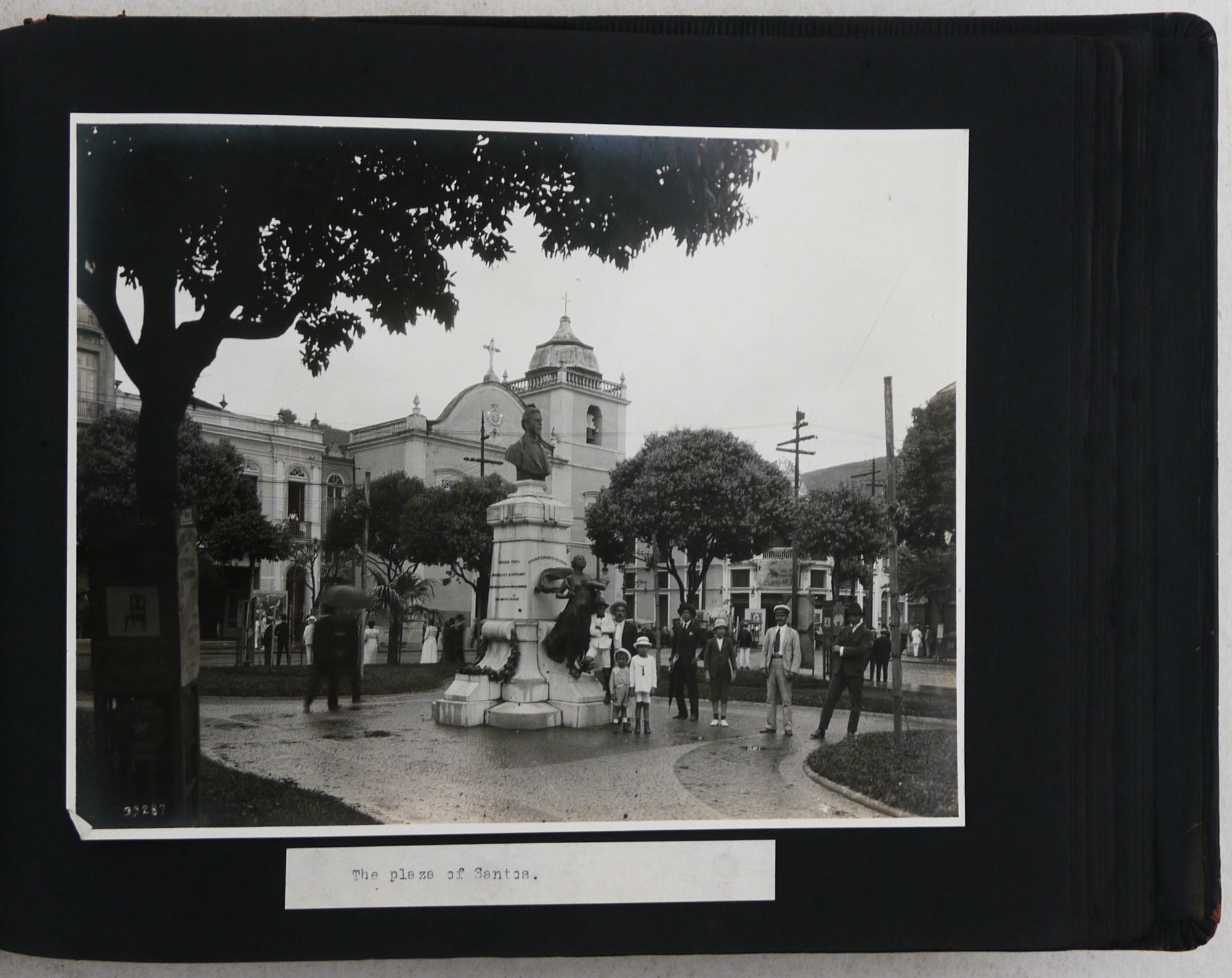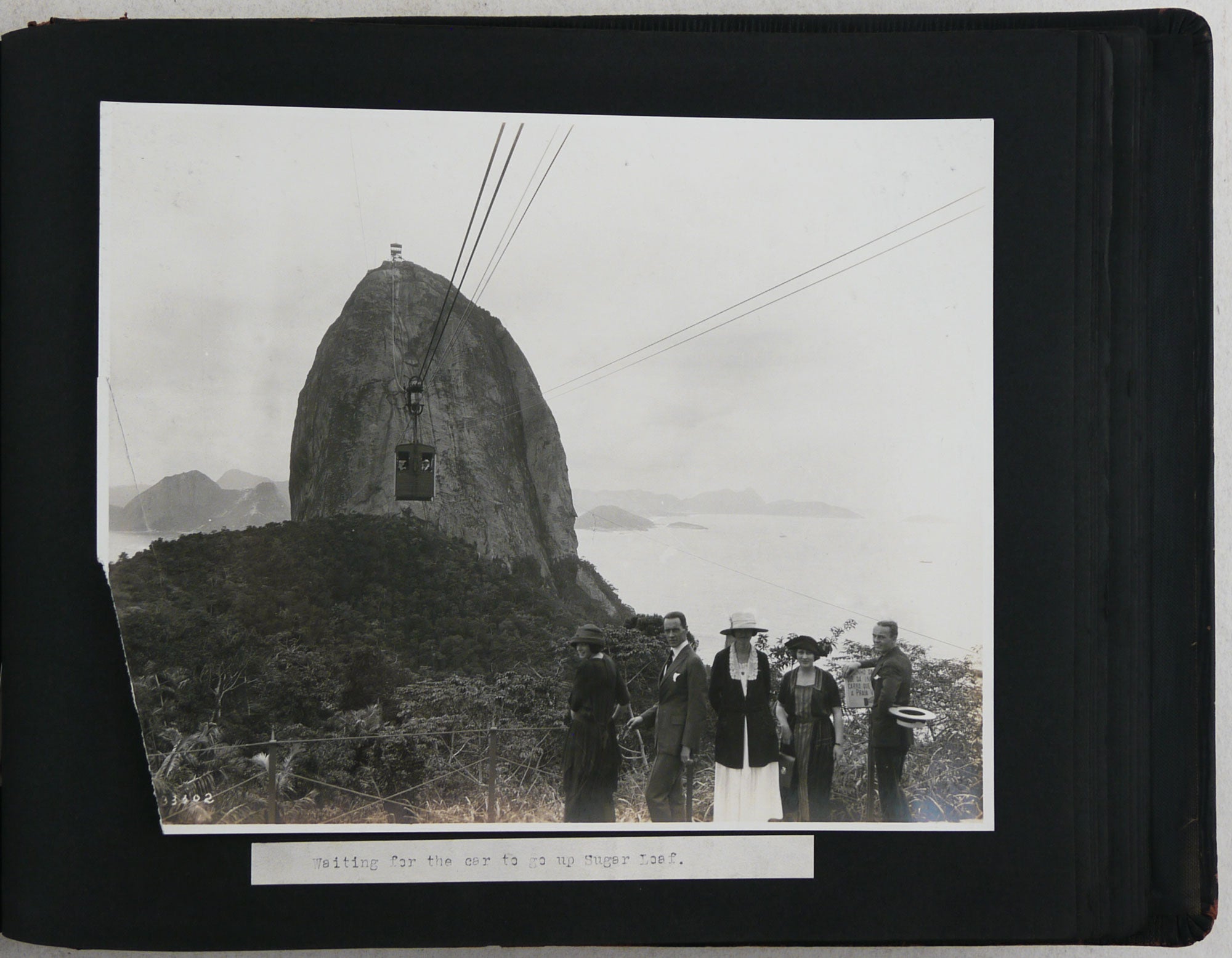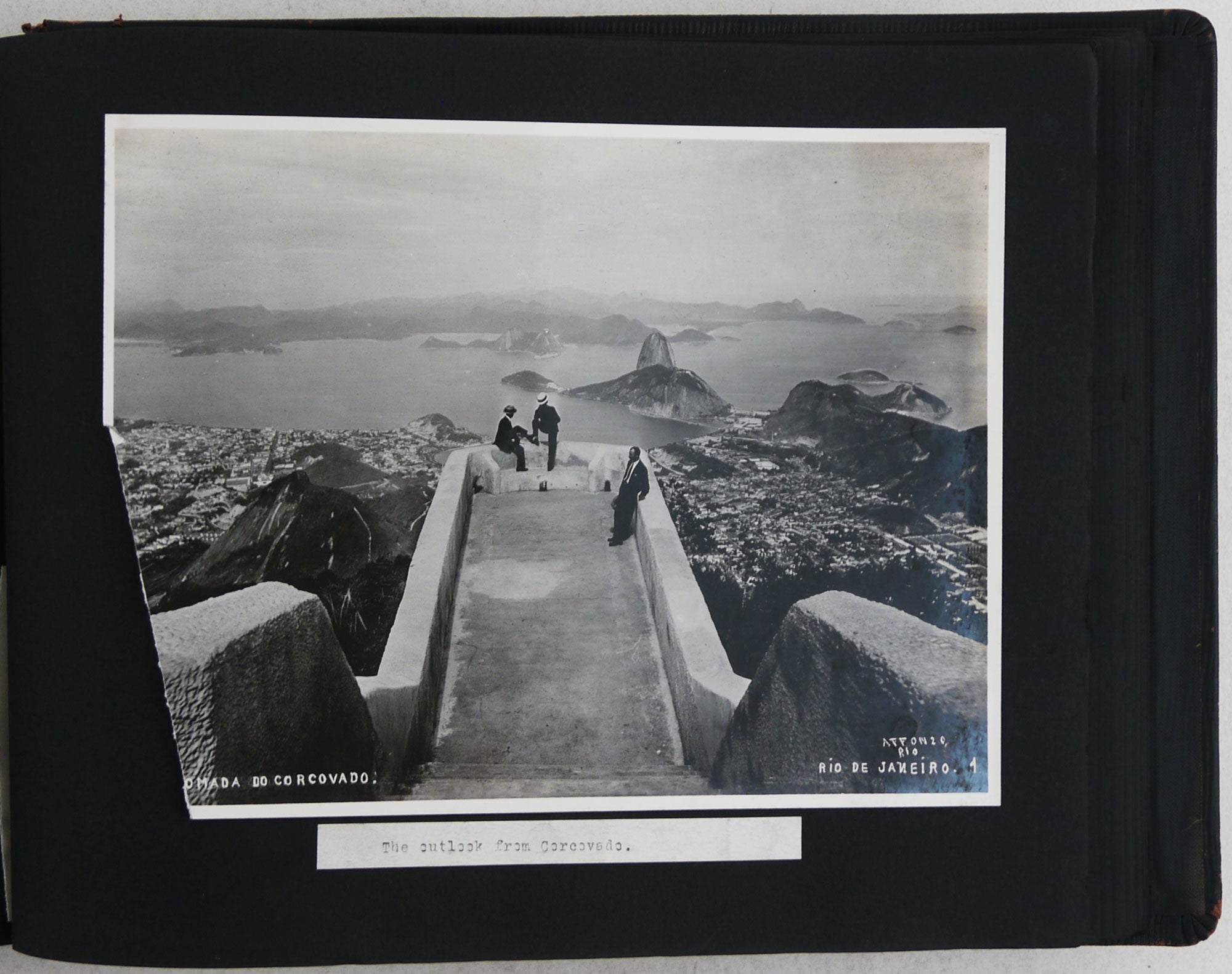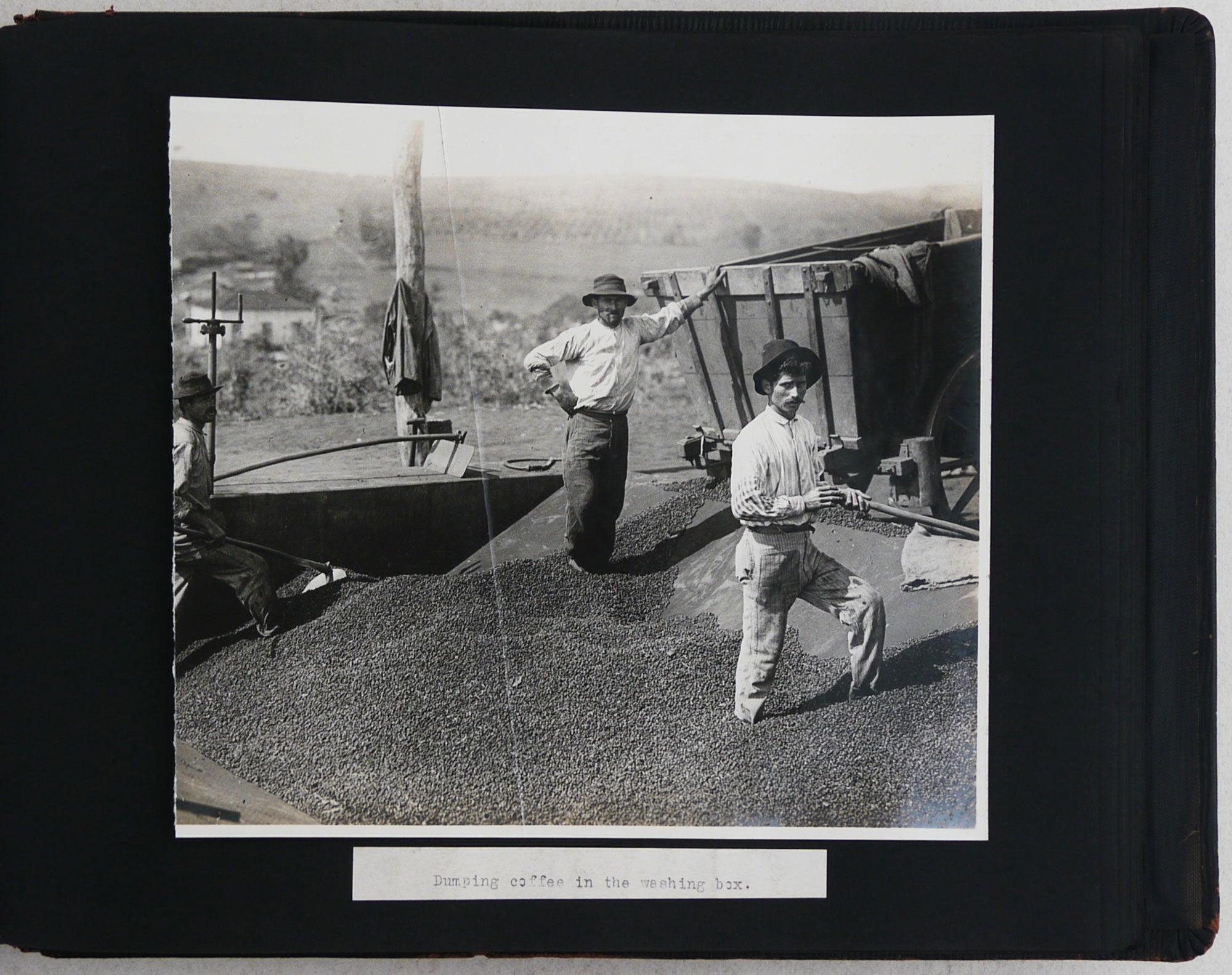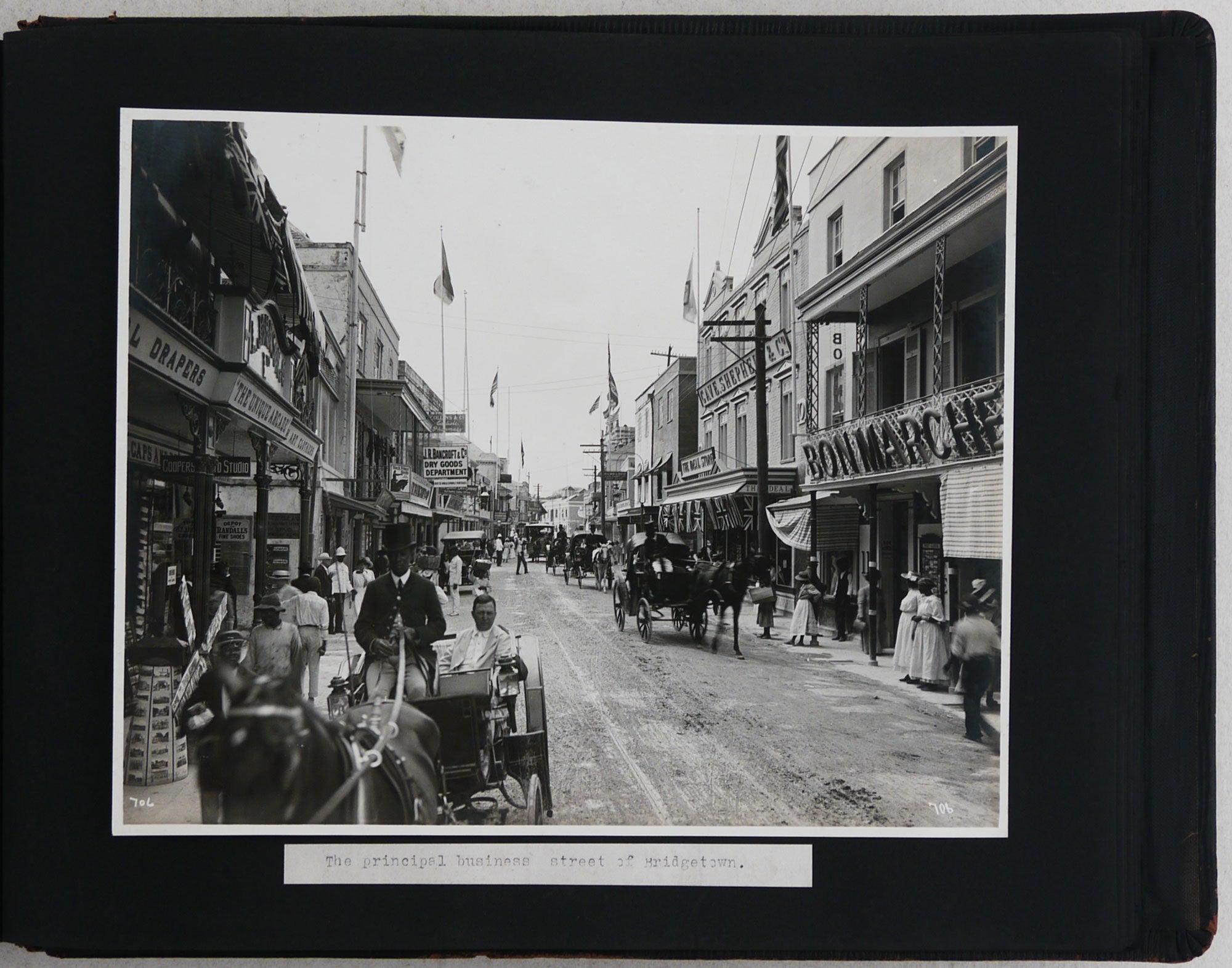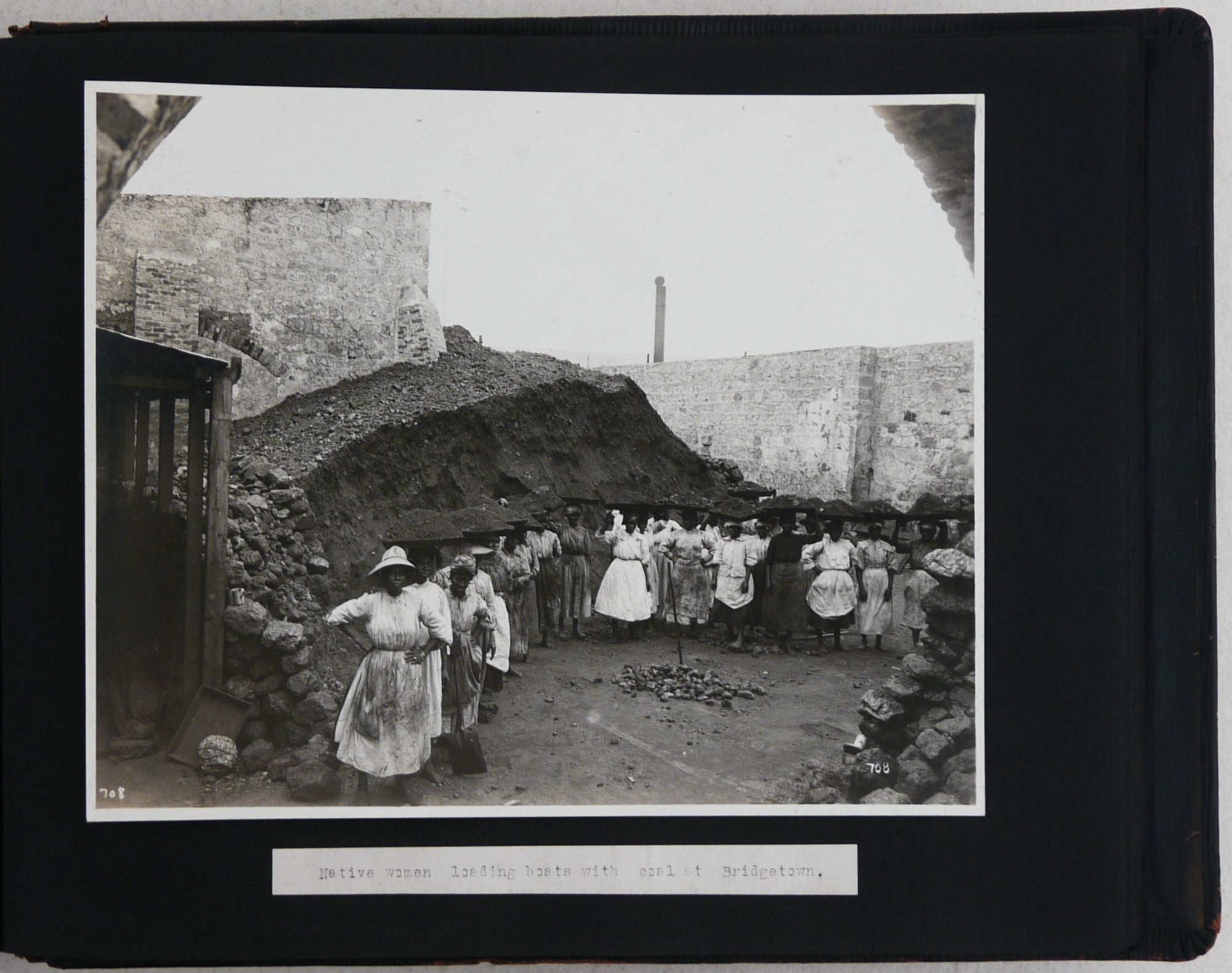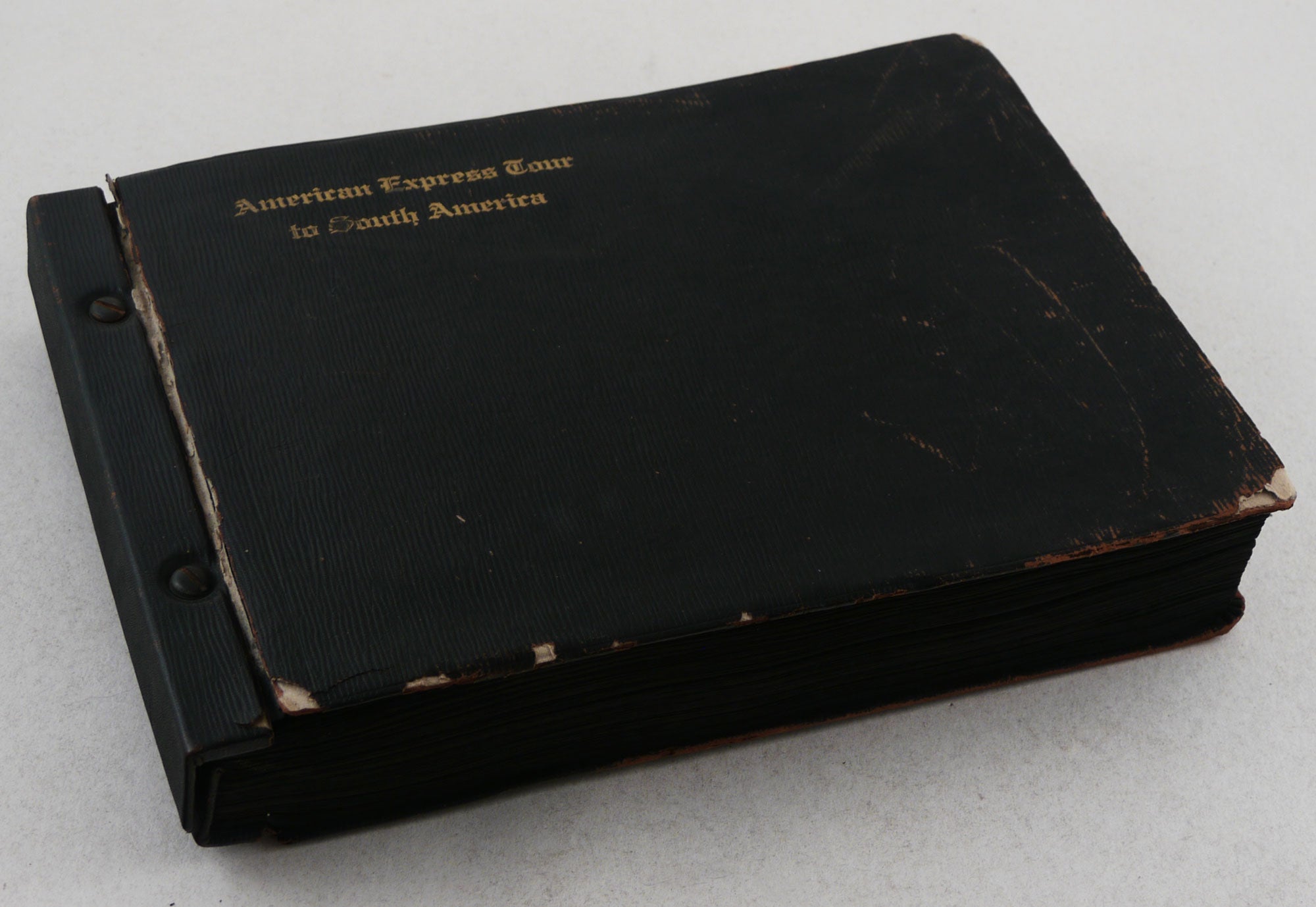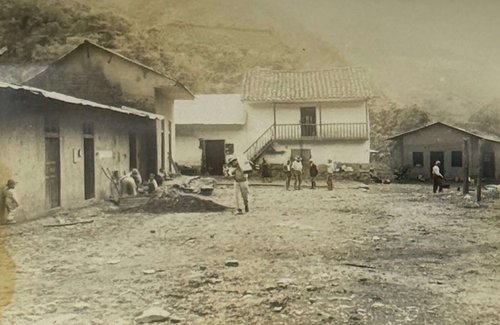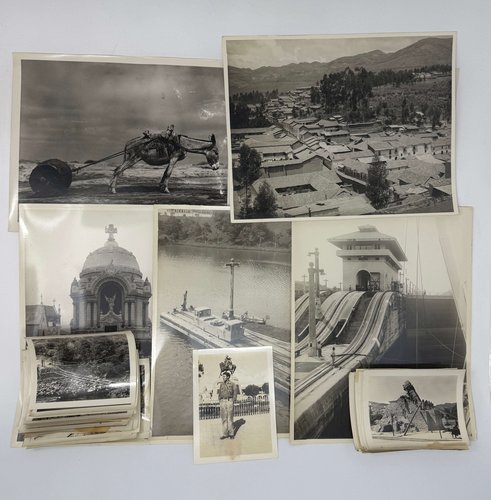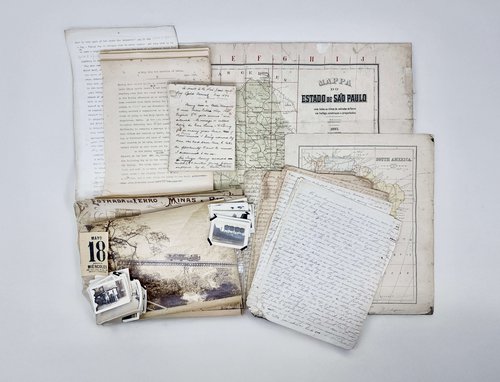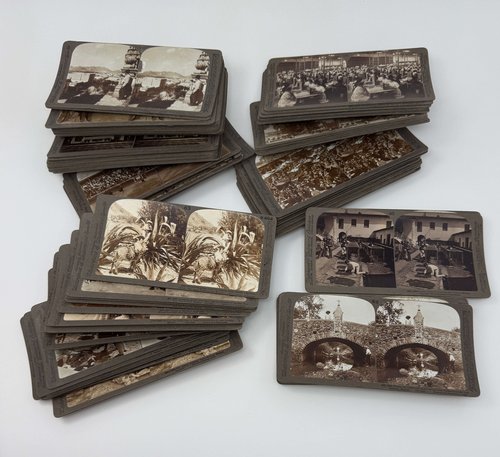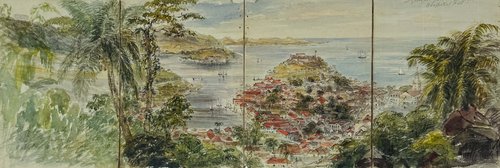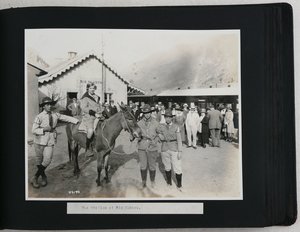
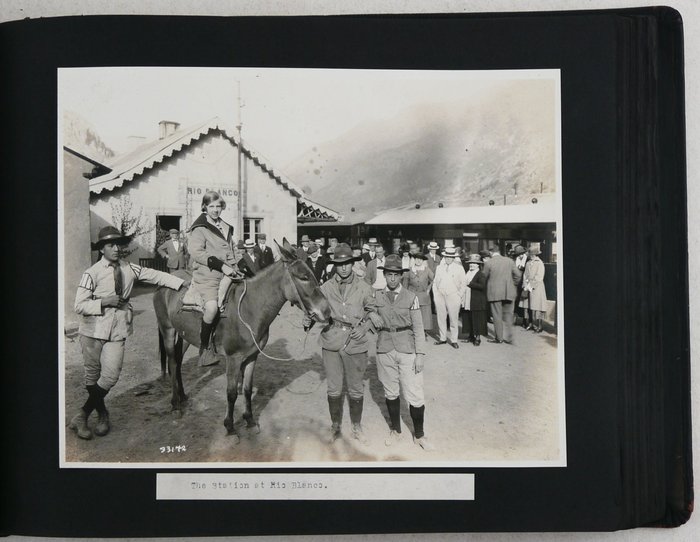
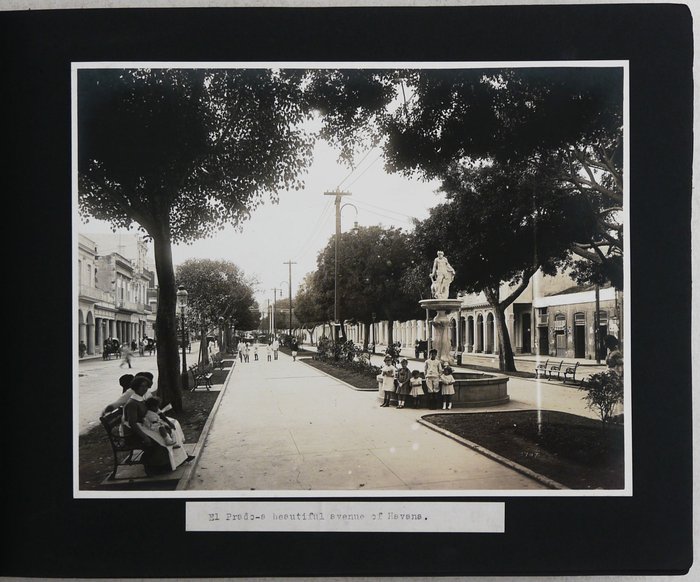
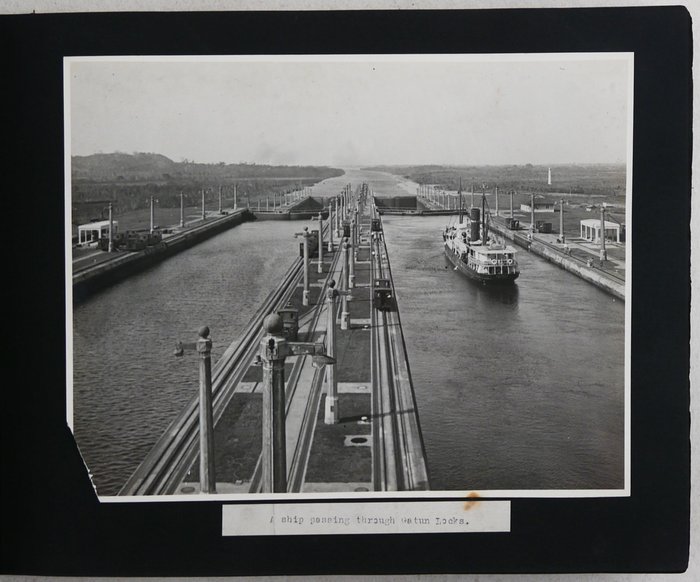
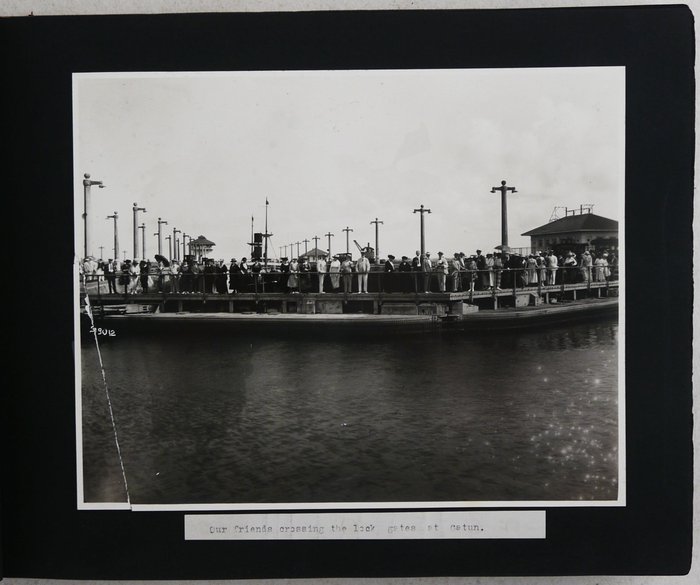
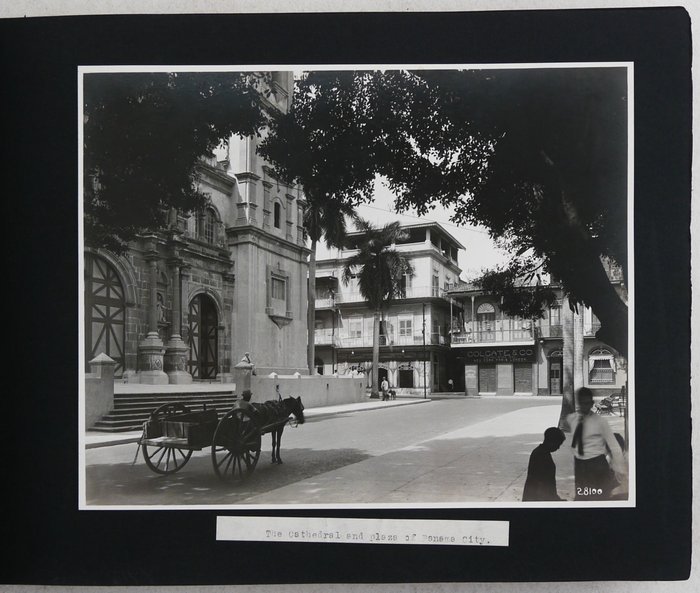
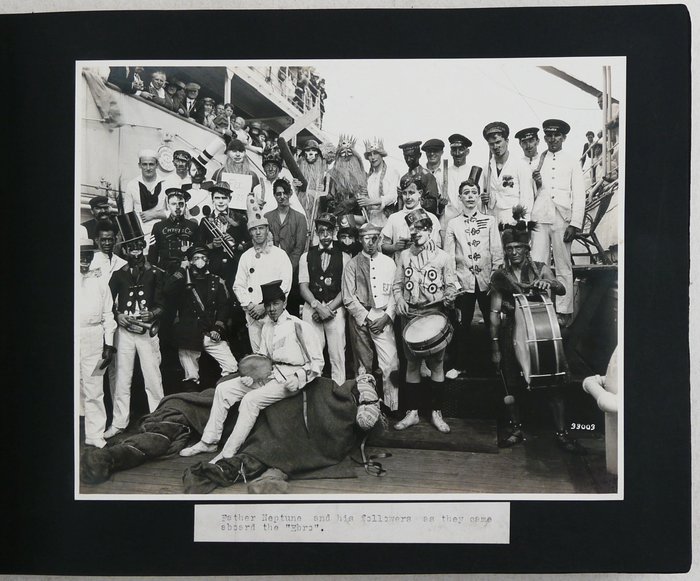
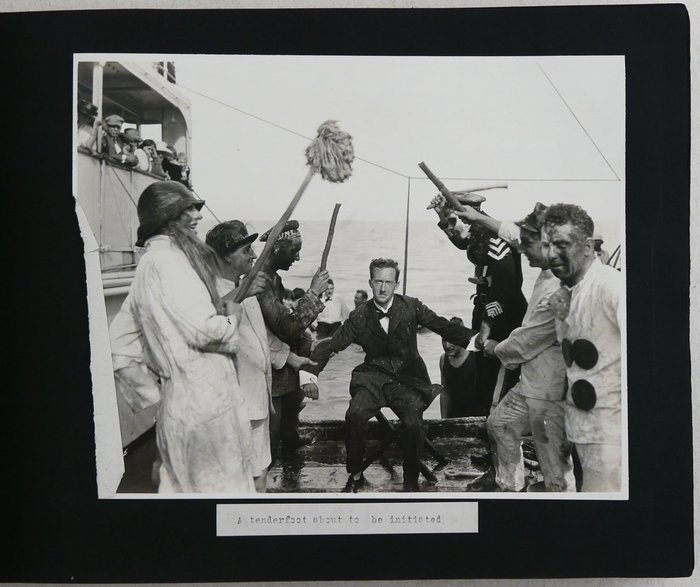
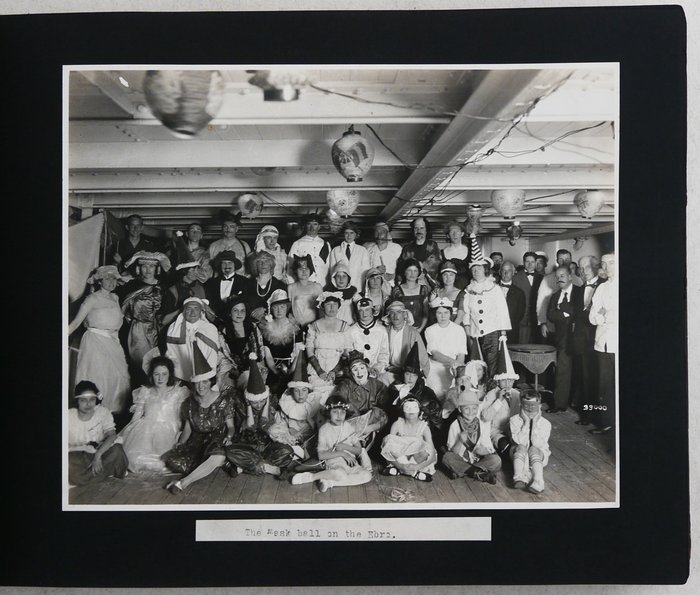
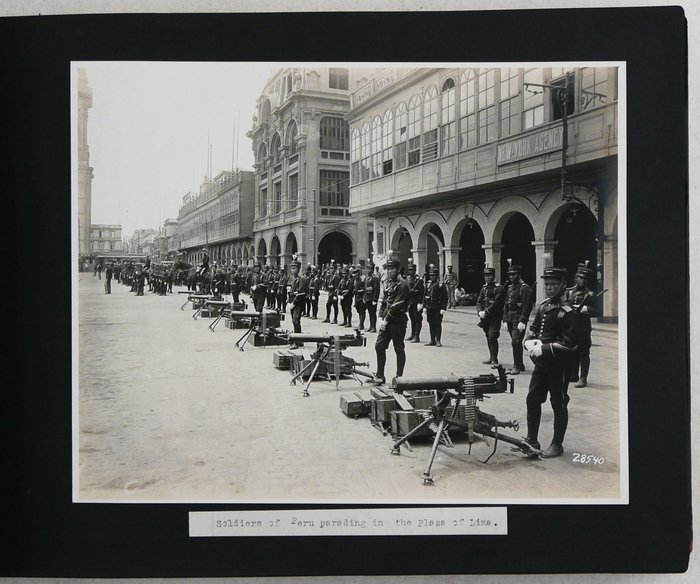
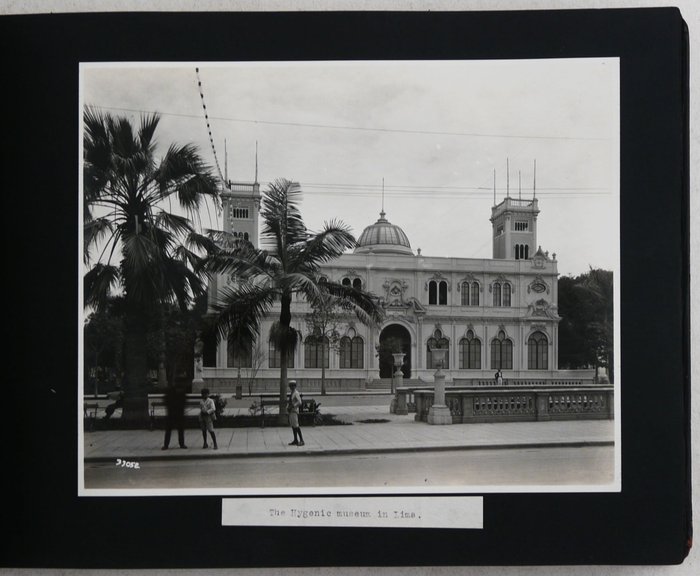
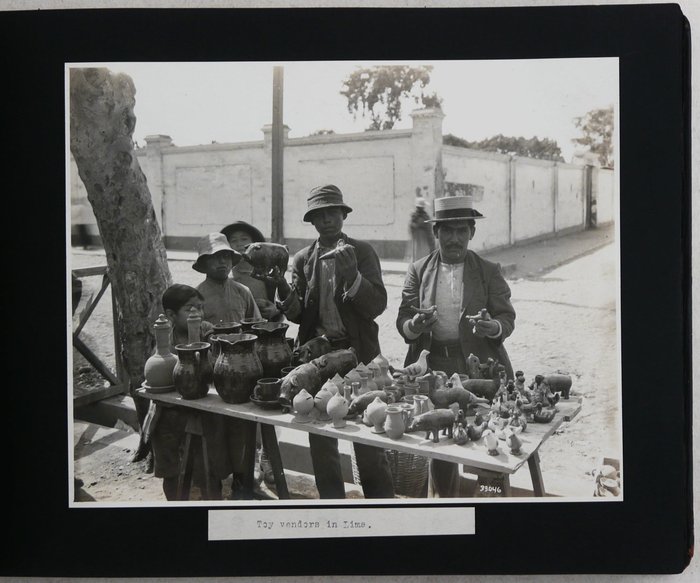
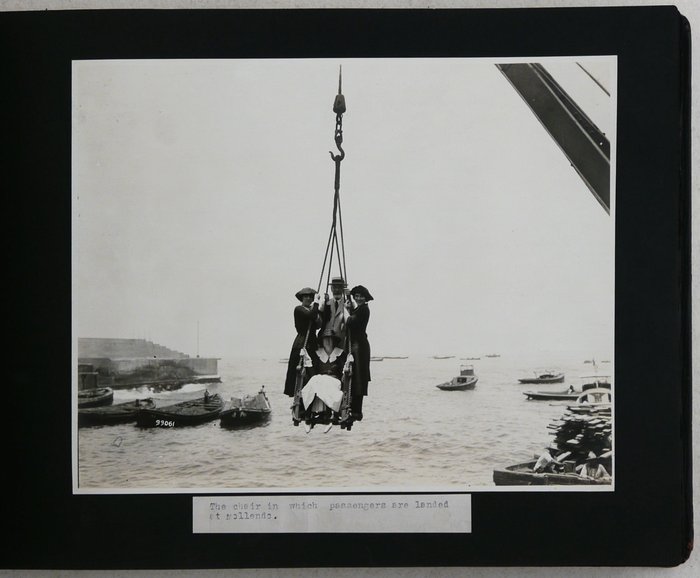
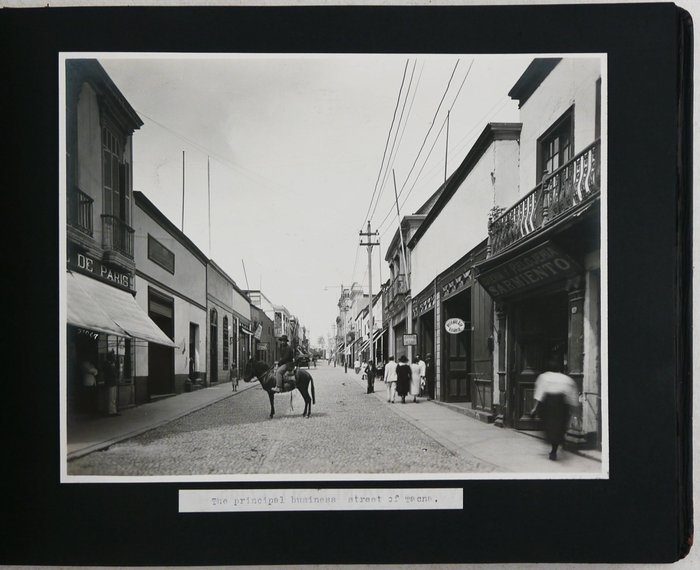
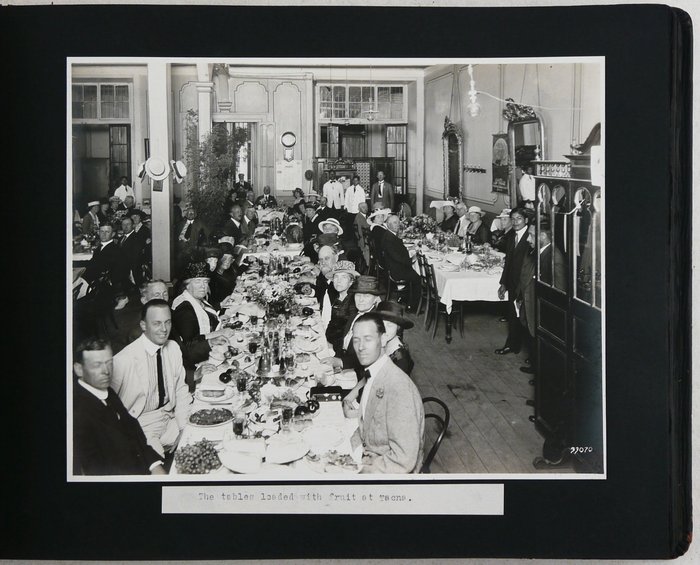
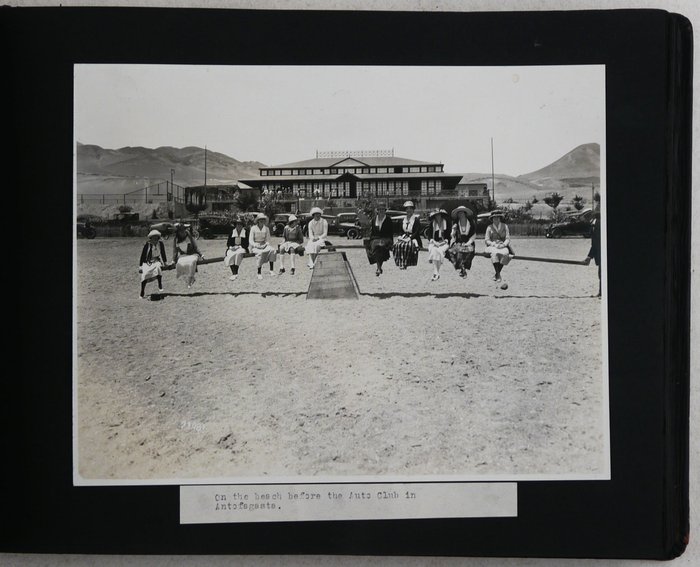
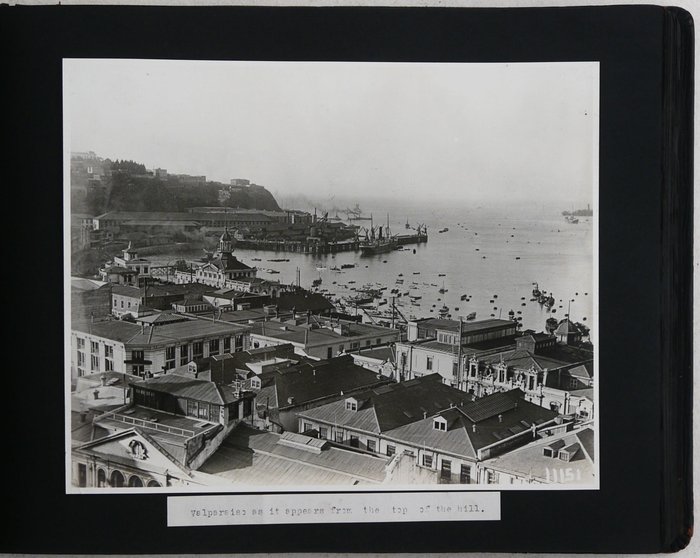
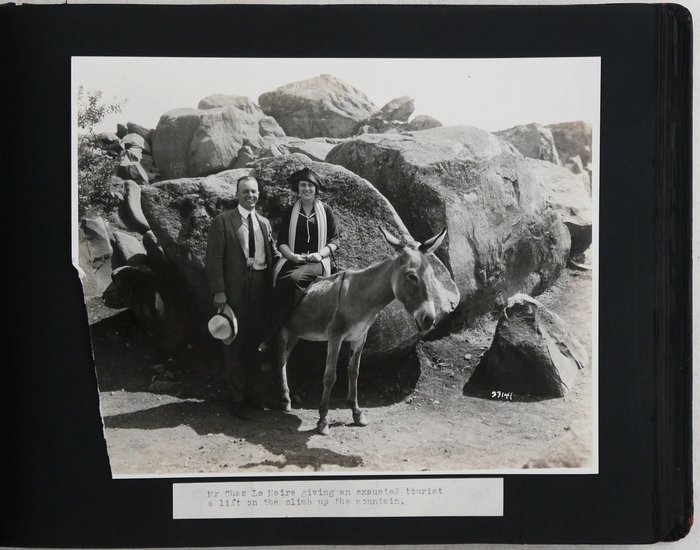
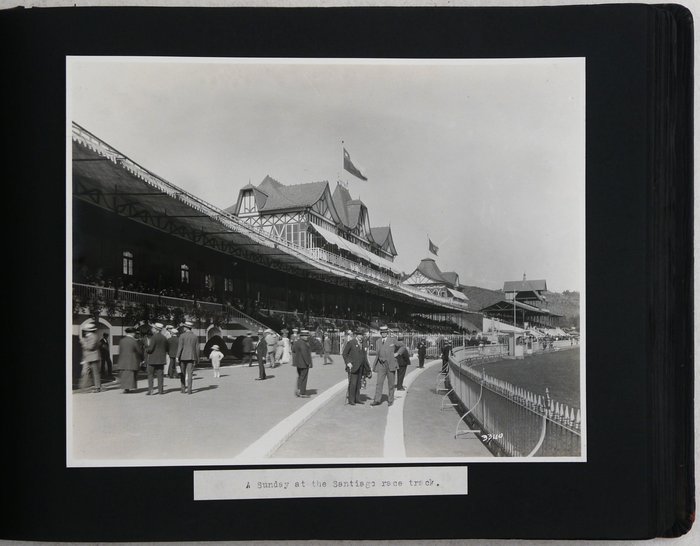
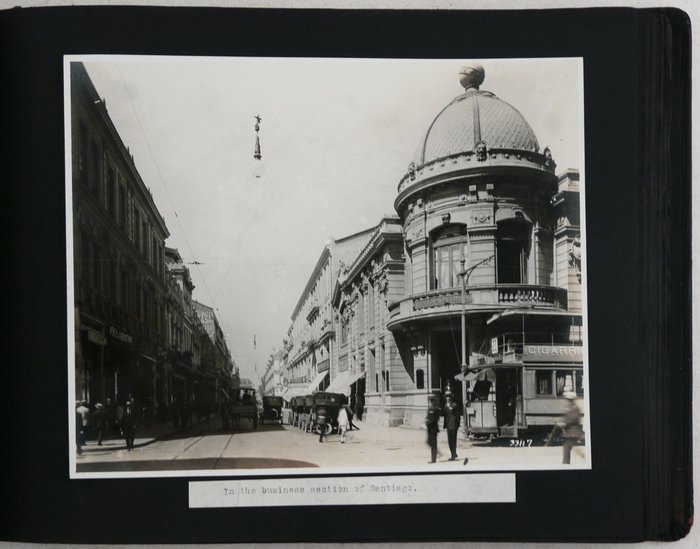
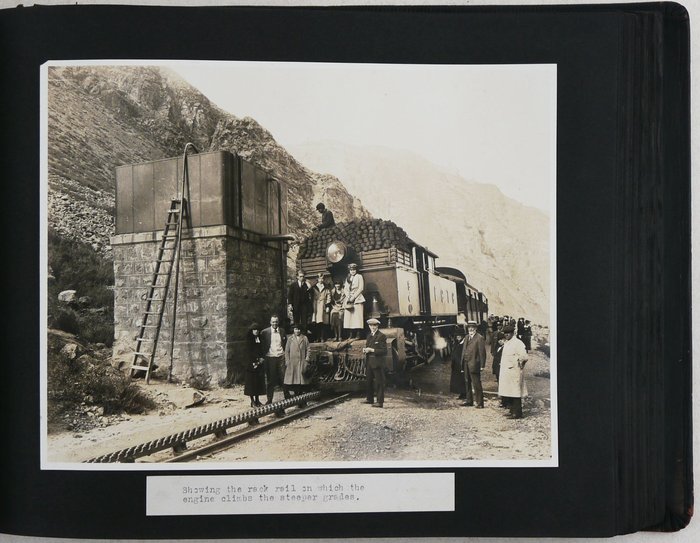
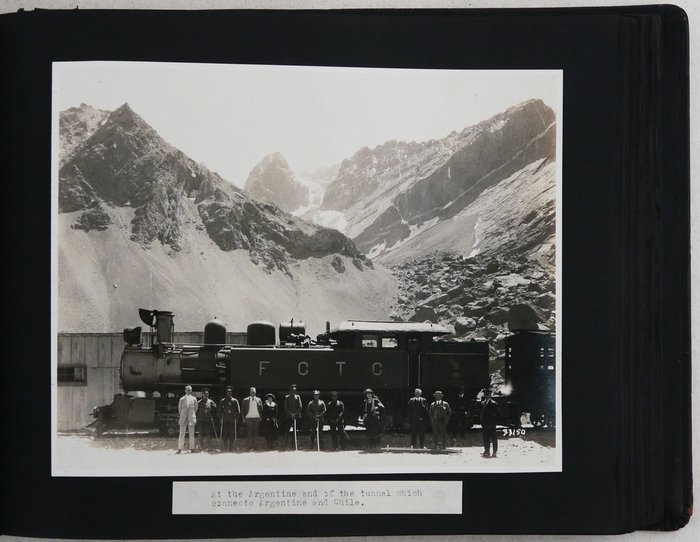
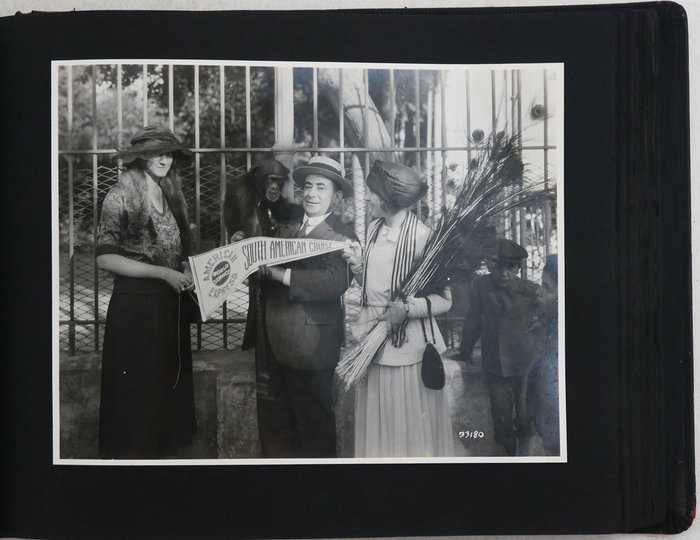
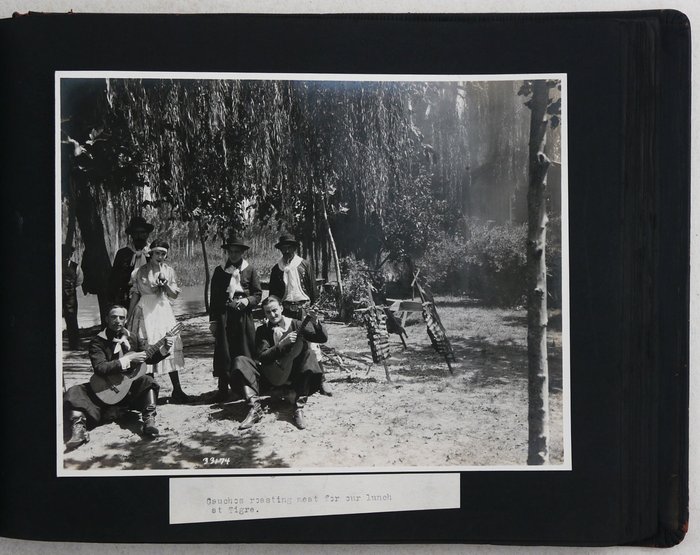
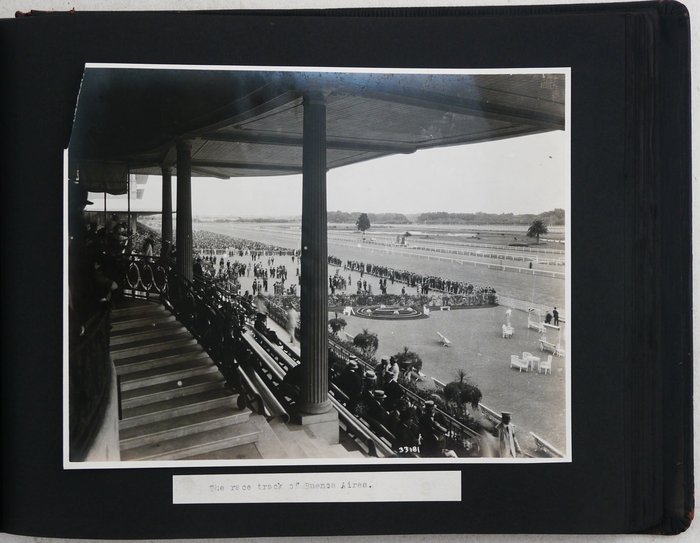
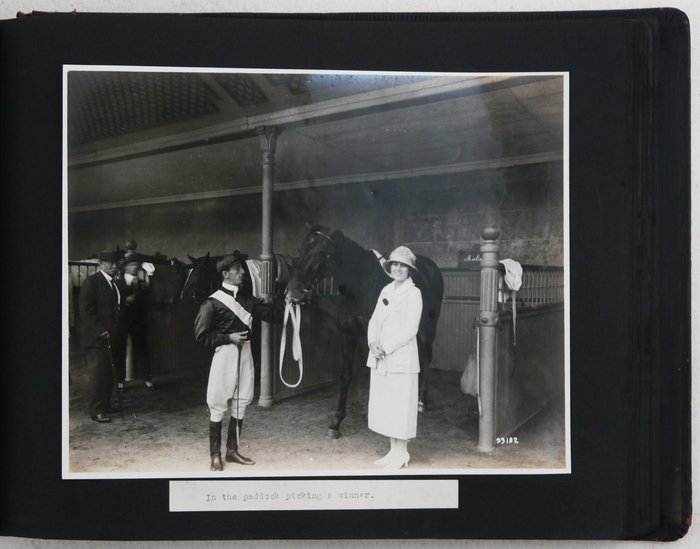
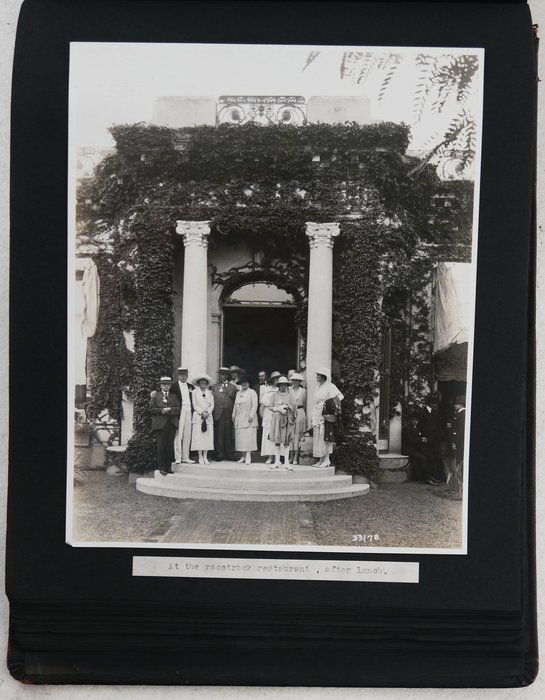
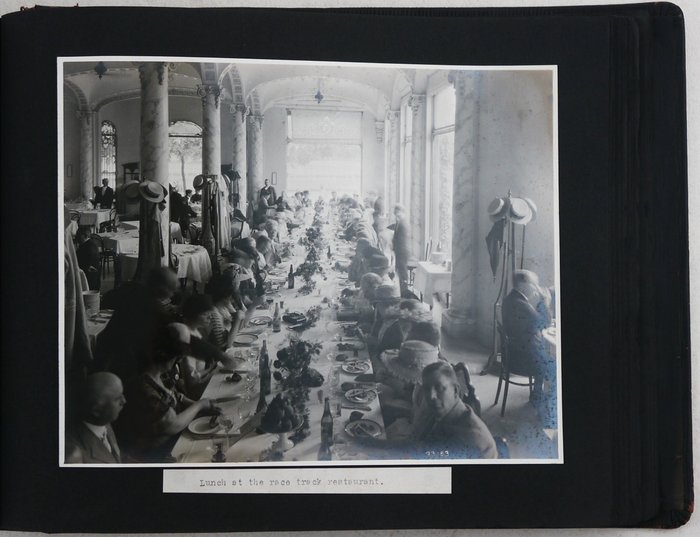
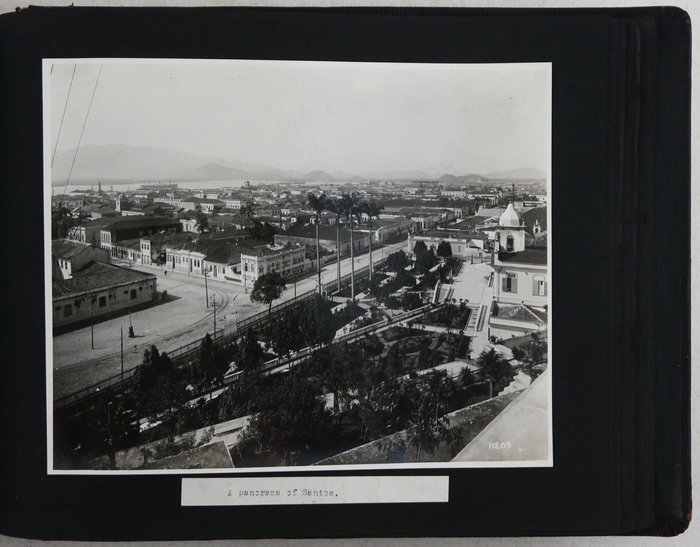
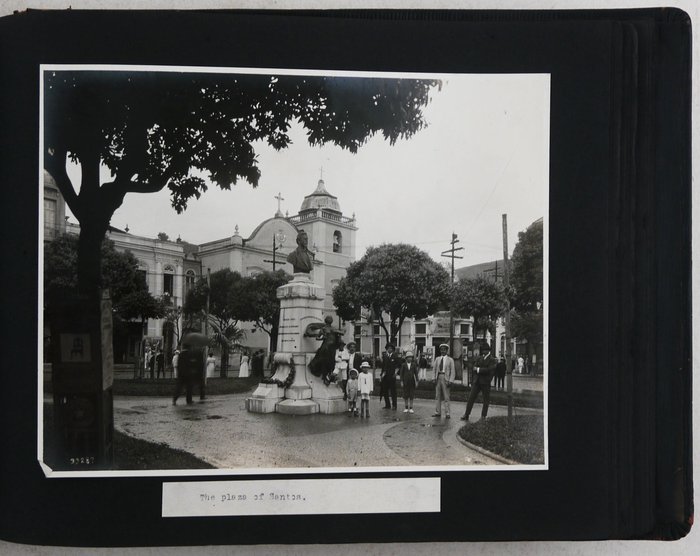
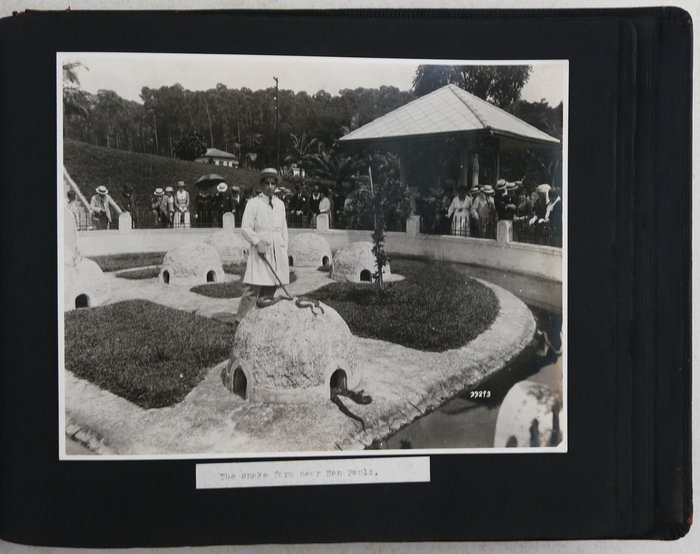
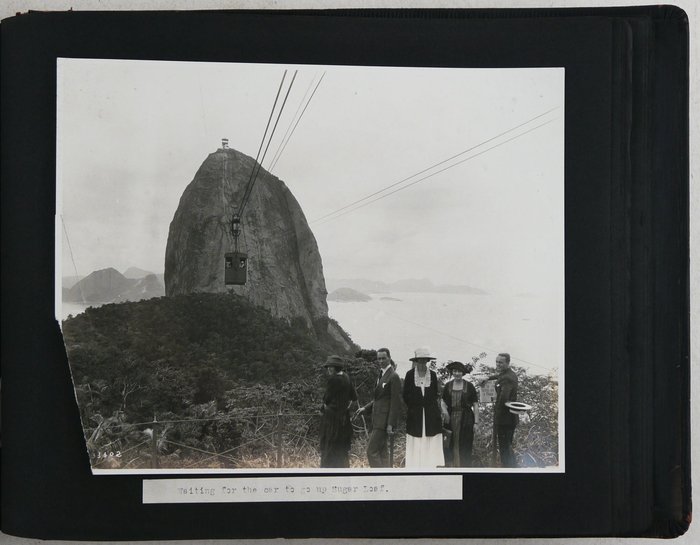
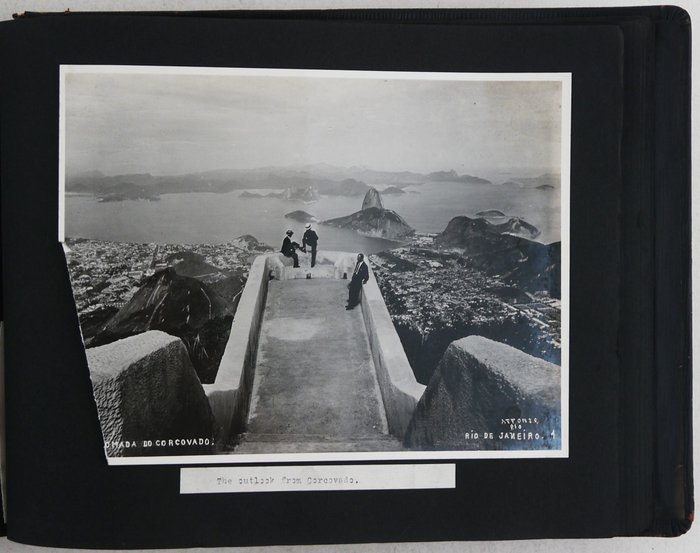
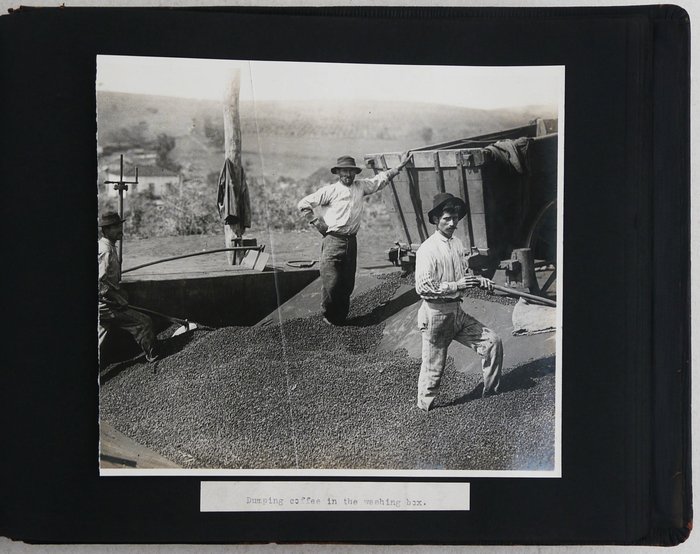
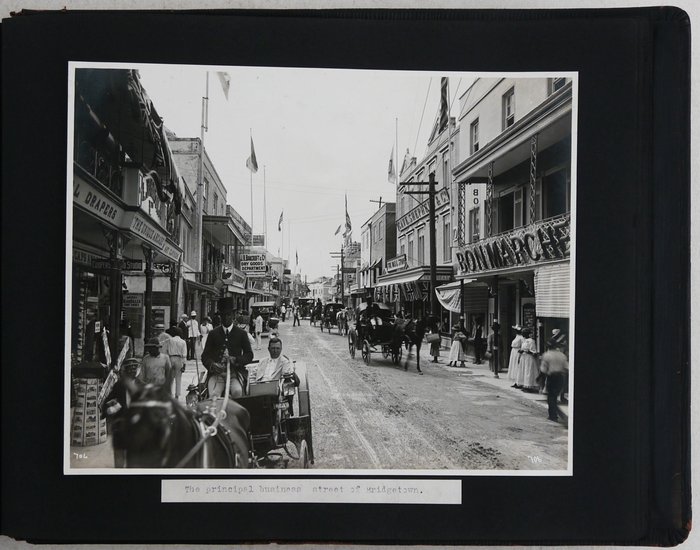
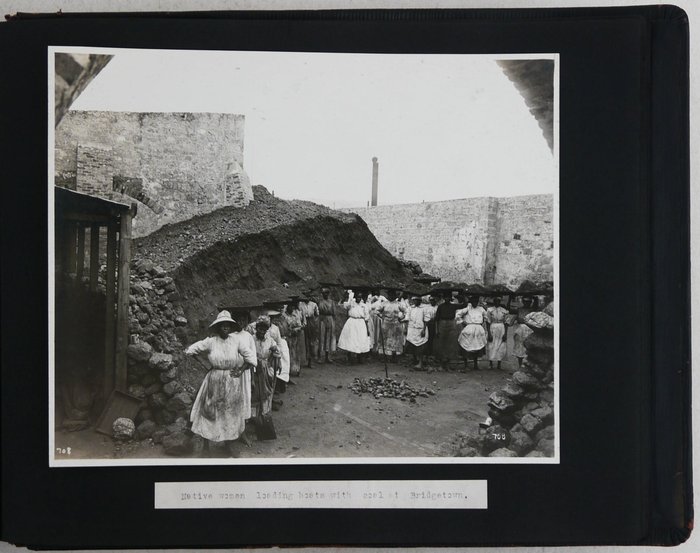
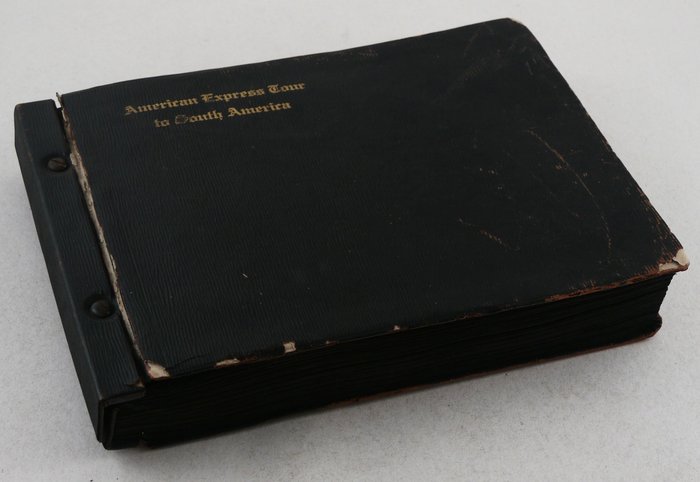
#PC39
Ca. 1921
Oblong Folio album (ca. 26x35 cm or 10 x 13 ½ in). 111 black card stock leaves. With 110 mounted original gelatin silver photos, mostly ca. 19,5x24 cm (7 ¾ x 9 ½ in), the last photo is 19x21 cm (7 ½ x 8 ¼ in). Most photos are numbered in negative, three views of Rio de Janeiro are also captioned in negative. About a hundred images are with paper labels with typewritten captions on the mounts. With nineteen smaller loose photos from ca. 8x14 cm (3 ¼ x 5 ½ in) to ca. 6x8,5 cm (2 ¼ x 3 ¼ in), housed in an envelope at the rear. Three images with period ink or pencil captions on verso, one photo dated on verso (“Easter Day – 1921, Rio, Brazil”). Period black full sheep album, fastened with metal bolts; gilt-lettered title on the front board. Paper label of the “Badger Line” of the “Heinn Company, Milwaukee” on the inner side of the rear board. Binding rubbed on extremities, front board with a crack at the stub, ca. thirty photos with bigger or smaller creases or losses on the left margins or corners, several photos detached and loosely inserted, but overall a very good album of large interesting strong photos.
Interesting extensive collection of large original gelatin silver photographs, compiled by a female traveller and documenting the “second annual American Express cruise to and around South America” in January – April, 1921 (A 70 Days Cruise// The Gazette. Montreal, January 31, 1921, p. 18). Amex, a freight and finance company which became famous through its payment cards, opened its travel division in 1915. In the 1920s, it offered tours and cruises to South America, Hawaii, California, the Caribbean, the Mediterranean, China, Japan, and around the world, as well as elaborate independent packages.
The 1921 cruise to South America lasted seventy days and started on board the luxury steamship “Ebro,” which departed New York and called at Havana, went through Panama Canal and stopped at Lima, Mollendo, Arica, and Valparaiso. From there, the travellers went by train to Santiago and Buenos Aires and then sailed up the east coast on board the steamer “Aeolus,” visiting Montevideo, Santos, Sao Paulo, Rio de Janeiro and Bridgetown (Barbados). Among the passengers were “a number of prominent Canadians” (A 70 Days Cruise, Ibid.), including “Sir John Hendric, former Governor of Ontario, Canada, and Lady Hendric” (St. Louis Girl Who Starts on S. American Trip// St. Louis Globe-Democrat. January 28, 1921, p. 5). The same article discussed several Louisans who went on the cruise – Miss Olguita Queeney, Mr. & Mrs. C.W. Johnson and James W. Scudder. One of the captions identifies another traveller as "Mr. Cha[rle]s Le Maire,” who was a travel representative for the “Walford-Astoria” and several other hotels in Chicago under the management of the Boomer family. Fluent in Spanish, Portuguese and French, Le Maire was sent on a cruise “for the purpose of studying business, travel and hotel conditions in the Latin American cities, and to arrange with the various hotel owners and transportation companies for the handling of American and European visitors, extending the service of arranging hotel and travel accommodations which the Boomer hotels inaugurated successfully in Europe” (A “Commercial Traveler” for a Great Hotel System is Mr. Le Maire// National Hotel Reporter. Chicago, January 31, 1921, p. 1).
The album belonged to a female traveller who went on a cruise (one of the smaller loose photos of four ladies bears the caption “The Lindermans, Mother & I at Tacna, Chile”). It opens with five views of Havana, showing Columbus Cathedral (Catedral de San Cristobal), Morro Castle and harbour, Paceo El Prado, Mercedes Church, and a scene with Cuban farmers in a field. The images of Panama include interesting group portraits of the travellers posing at Gatun locks, a view of the Panama Canal at the Culebra Cut, and two photos of Panama City (Metropolitan Cathedral, ruins of the old Cathedral tower in Panama Viejo). A lively series of photos depicts the celebration of crossing the Equator and fancy-dress balls on board the S.S. “Ebro” (“Father Neptune and his followers,” spectators, “Father Neptune holds court,” “a tenderfoot about to be initiated,” makeshift pool on the ship’s deck, ball participants in fancy dress).
Nineteen photos of Peru show Lima (Cathedral and Plaza Mayor, a military review, the travellers having lunch at the Exposition Building, the bull ring, the Institute of Hygiene, portraits of toy and fruit vendors, elaborate forged metal gates to a private residence, a pier in Barranco - “the bathing resort of Lima”), Mollendo (“the breakwater and landing place,” passengers being landed in a chair), and Tacna (“the principal business street,” a city park, the travellers dining in a restaurant, the train which “carried us from Tacna to Arica”).
Over twenty images of Chile include views of Arica (oxen moving cargo at the dock, fruit vendors), Antofagasta (the beach at the Automobile Club), Valparaiso (the port and harbour), and Santiago (Santa Lucia Park, National Congress Building, “Mr. Chas le Maire giving an exhausted tourist a lift on the climb up the mountain,” tourists posing on the steps of Virgin Mary on the summit of San Cristobal Hill, city race track, the tourists having lunch in a garden, a flower stand, an oxen-driven cart, a “business section of Santiago,” La Moneda Presidential Palace, Fine Arts Museum). Several views show the interior towns of Los Andes and Rio Blanco, which the party visited during a train ride to Buenos Aires (Salto del Soldado, Rio Blanco railway station, train engines and cars of Ferrocarril Transandino Chile with the Andes in the background).
Twenty-six views of Buenos Aires show Plaza Hotel, Jockey Club (the façade and interior of the dining room, Monument of the Spanish, Las Nereidas fountain, Monument to the Two Congresses, Palermo Park, the tourists posing with a banner “American Express, South American Cruise,” “the Interpreter squad of the Argentine Police,” city racetrack, tourists having lunch the racetrack restaurant, “gauchos roasting meat for our lunch at Tigre,” &c.).
Over a dozen views of Brazil show Petropolis, Santos (general view, city square, “the Aeolus loading coffee at Santos”), Sao Paolo (snake farm), Rio de Janeiro (Sugarloaf Cable Car, Sugarloaf Mountain and Botafogo Bay, Palace Hotel, a view from the Corcovado Mountain) and several scenes of growing and harvesting coffee beans on a plantation near Sao Paolo. The album closes with six views of Bridgetown (“the principal business street,” “native women loading boats with coal,” “an avenue of royal palms,” windmills grinding sugar cane, “native boys diving for coins”) and a bird’s-eye view of Havana.
Overall an attractive, extensive collection of large original photos from the second American Express tour to South America.

